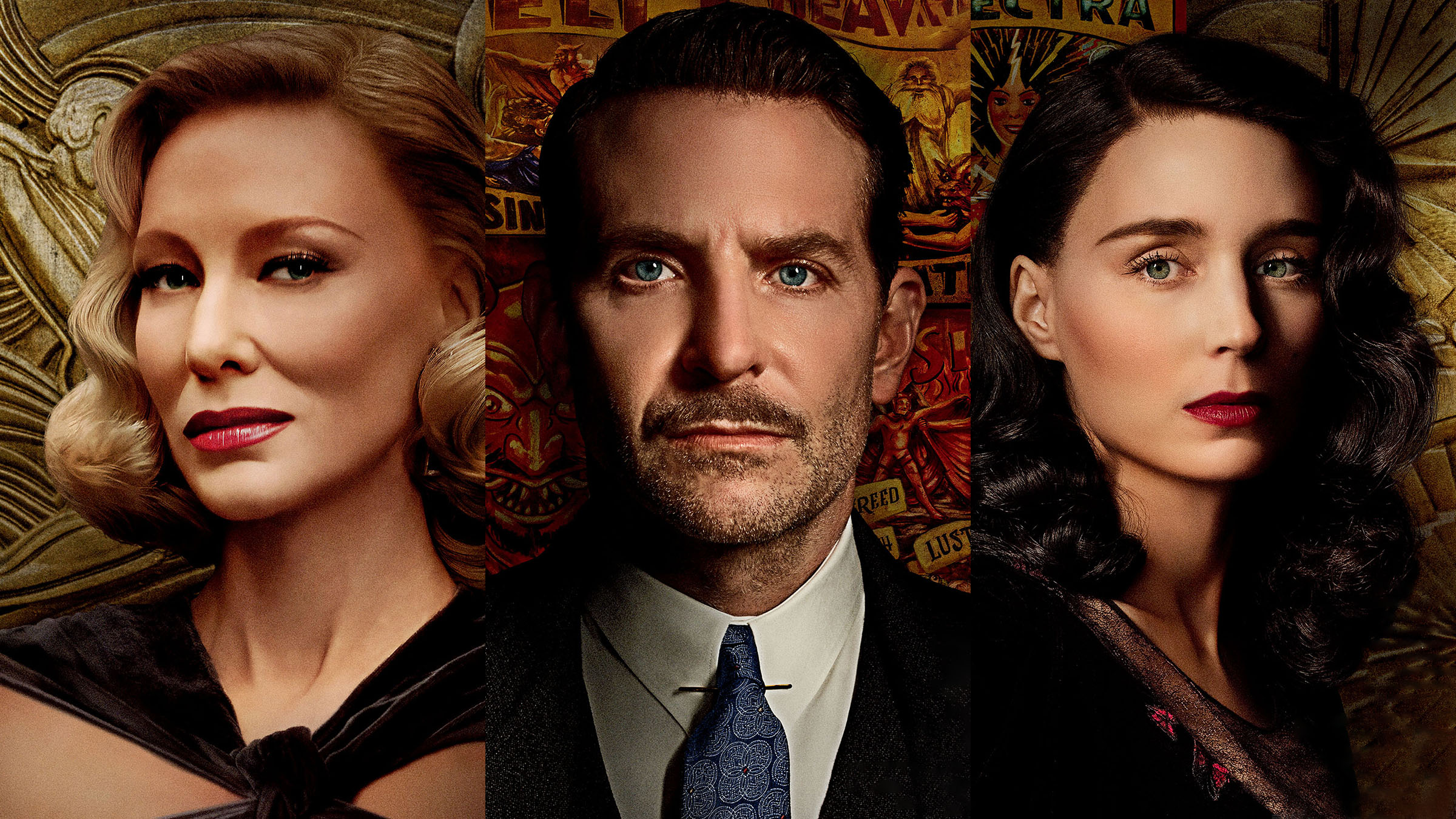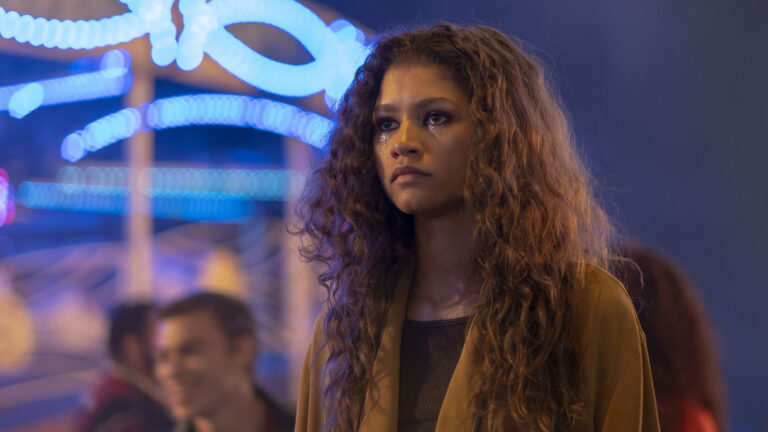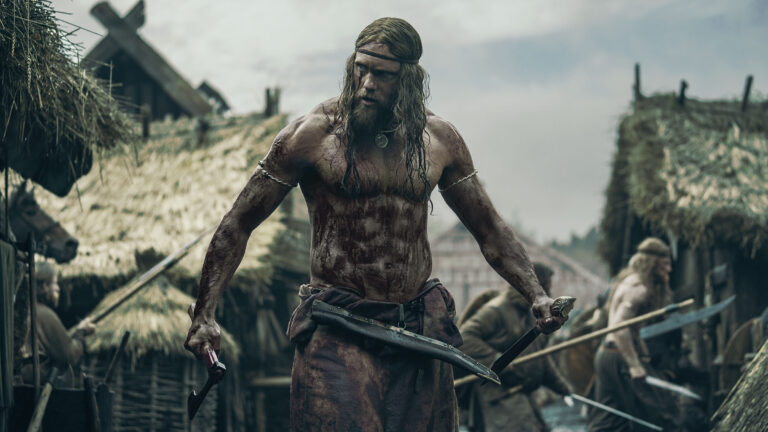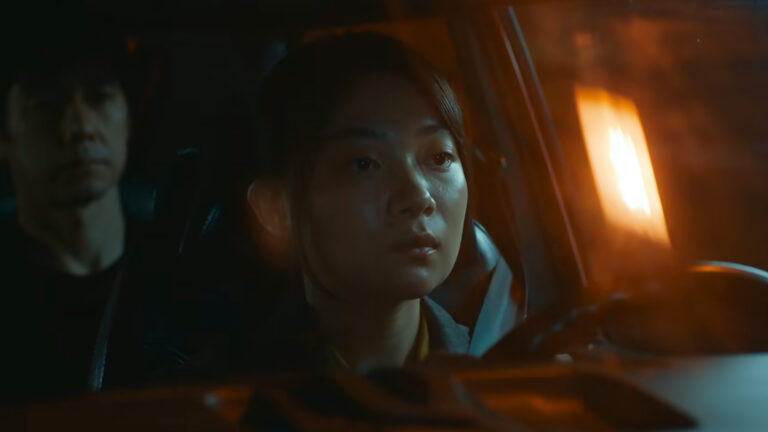In this Art of the Cut interview, we discuss Guillermo del Toro’s film, Nightmare Alley with editor Cam McLauchlin.
Cam is a Toronto-based editor who has worked on numerous previous del Toro films in various capacities, including working as associate editor, title designer, and music editor on Shape of Water.
His other work as editor includes features films: Teen Spirit and The Void, and TV including The Girlfriend Experience and The Strain.
Listen while you read…
HULLFISH: Thank you so much for joining me. I loved the movie. I interviewed Sidney Wolinsky for Shape of Water. You worked on that film as an additional or associate editor.
McLAUCHLIN: I got a “thank you” credit as associate editor. As the years go by with Guillermo and editors kind of come and go, I’ve always been part of his inner circle in the post branch. Sidney is amazing. I actually just spoke to him yesterday. He’s definitely a father figure to me in this world.
HULLFISH: So it sounds like you have known Guillermo since before Shape of Water, even.
McLAUCHLIN: Yeah. I met him on Pacific Rim. I worked in a lab in Toronto Deluxe, which is now Company 3. I was working there doing dailies, digitizing on the Avid. Then moved into telecine transfer, working with colorists, laying off to tape. And that was really at the point where the writing was on the wall—the RED camera, people were starting to shoot aerial footage or where they needed to run the camera for a long time. It was this new technology, and I became sort of the guy that just figured it out in the lab.
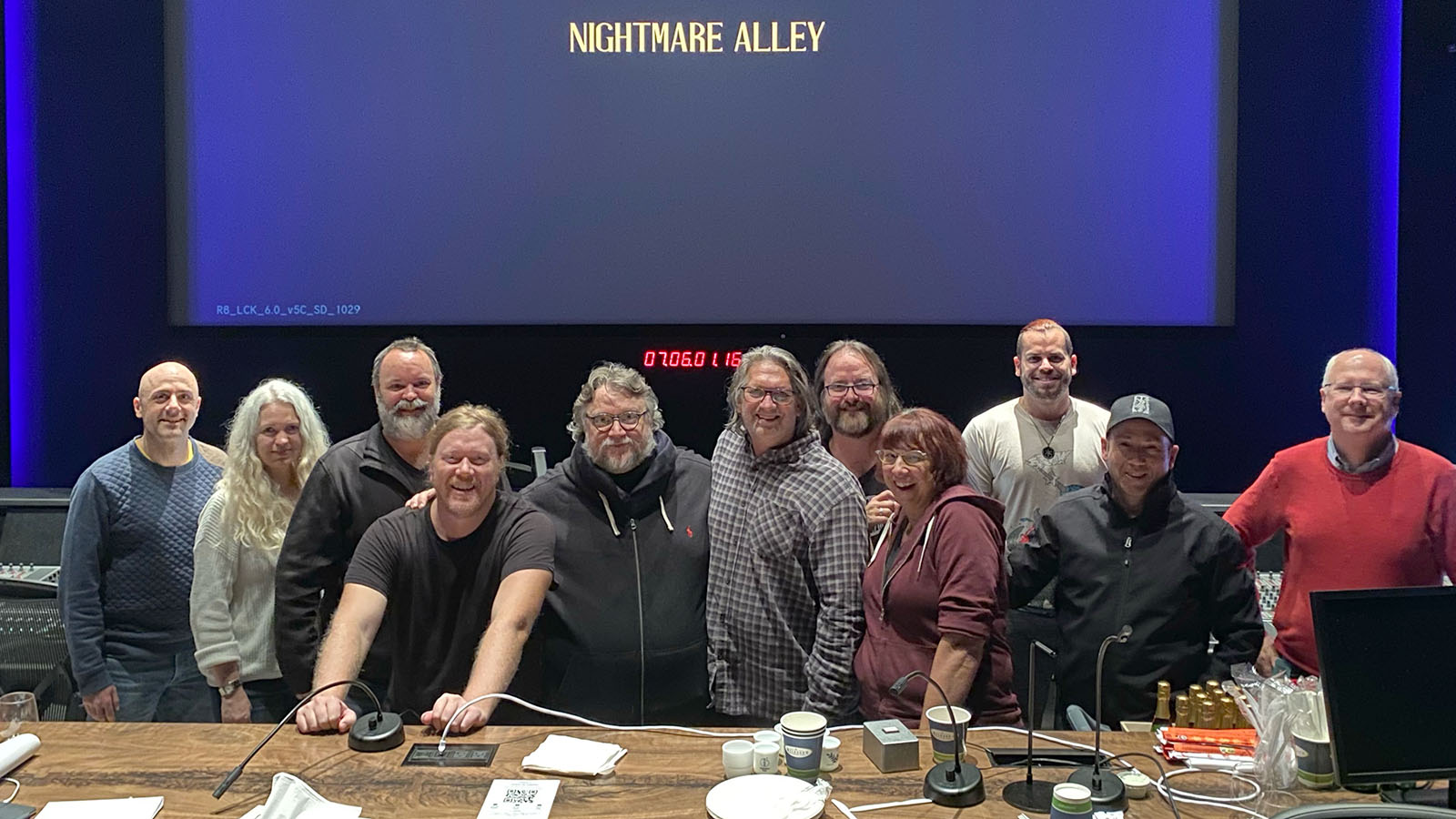
Then I moved into the DI (digital intermediate) department because that knowledge and skillset pushed me in that direction—working with clients and colorists and understanding the flow of the lab and working with directors and editors. It was always my intention to be in picture editorial, but I just happened to come in at that entry point.
I actually very much appreciated that experience. I know a lot of editors come out of school and begin as picture editors, but they have no idea about the other components of the job.
I finally left the post lab world. I found myself working in independent film as an assistant, cutting short films on the side. I then found my way into the union as a PA. Then the assistant editor I worked with—Laura Johnson—gave me a lot of experience and ability to become more involved in the process, and we worked on a lot of great shows, more Hollywood productions.
Toronto is more of a production town—or at that time it was—where we would service shows from L.A. and then they go back and finish. That was something motivating to me because I wanted to go and finish it.

I went back once to LA on a film called Carrie, working with the editor, Lee Percy. That was my first real taste of: “OK, I want to do this. I want to sit in the chair.” But I knew it was going to take some time because, if that’s the path and those are the films I want to work on, clearly they don’t just give the keys to someone overnight. Eventually, Guillermo found his way to Toronto by way of a Lovecraft film that he was going to make: At the Mountains of Madness. Unfortunately for him, it fell apart, but then Legendary came in with Pacific Rim.
He set up shop here in Toronto to do that. I was able to get my résumé on the top of the pile and I got in. At the beginning of the production, I was in Toronto and the editor was still in L.A. and the American assistant was there too.
At the beginning of the production, while the editor was still in L.A. on day one of the shoot, Guillermo called the production office and asked for someone from editorial to come downstairs and see him. By sheer fortune, I was that person. I went down. He was doing storyboards and I walked up to him and I said, “Hey, I’m from editorial.” He said, “We’re shooting a scene this afternoon with a bulldog and the bulldog obviously can’t bark, so we need to find some sound effects and I’ll be up at lunch.”
I sweat the next couple of hours, but managed to get the right sound! (Laughs). I wasn’t THE first assistant editor on the film but found myself in a creative position early on with Guillermo.

I was just learning the ropes of the big, big shows and how it works with studios and all that, I was completely unaware of Filemaker pro, and more of the larger more intensive jobs as a First on a large show. So I kind of fell into this pocket of doing sound and music. I did a lot of temp music for him on that film until a much more talented music editor came on board, but I was there to quickly give him and help him and support his ideas in the creative process early on, and we just kept going. Crimson Peak… The Strain with Sidney…
Each show seemed to develop into a point where at some point the editor might have to leave because Guillermo really explores the material and takes his time. So at certain points and Crimson Peak, the editor had to go back to Spain and I took over and it just led to a shorthand that he and I began to develop where I was cutting with them, so when it came time to do Nightmare Alley, I guess he just felt that I was the next choice.
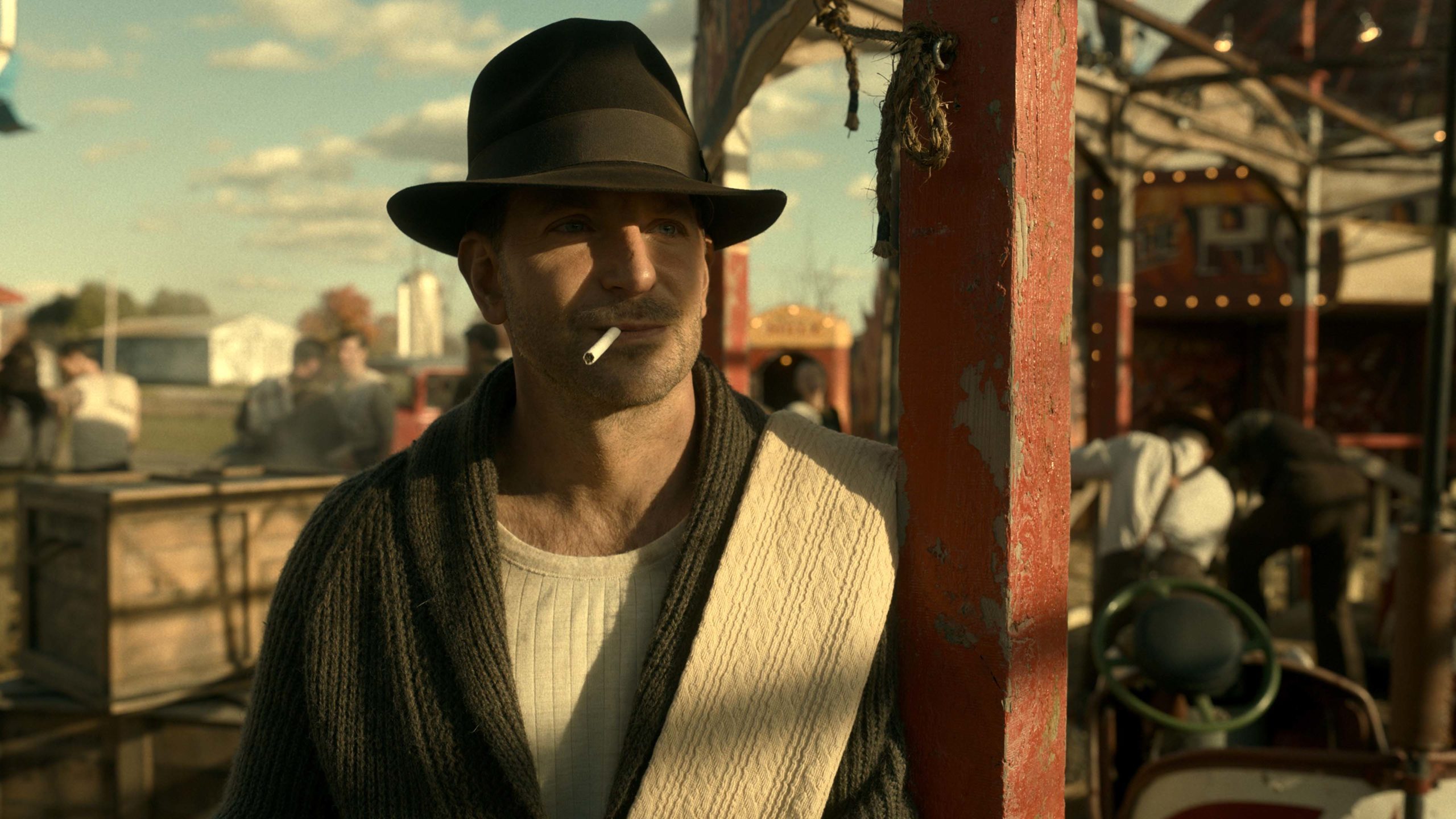
HULLFISH: It’s so interesting to hear the many paths that people take to the editing chair because they’re all different. Yours is certainly a very unique one, and I love it. One thing that I wanted to clarify—because aspiring editors might not know—you said you were not the assistant because you didn’t know FileMaker Pro. Can you explain why an assistant editor needs to know Filemaker Pro?
McLAUCHLIN: Yes, essentially, the role of the First is a massively important role. They run the cutting room. And with that show, I was definitely trying to learn on the fly. Basically, FileMaker Pro is a database management software and it’s super powerful. You can quickly export EDLs and manage lists through it.
It’s something that I didn’t really harness the power of, but for VFX editors, it’s a must-have. It was definitely something that on an indie film level you would never really even consider. You might use Excel but being able to export lists out of the Avid and then quickly be able to take that information and feed it off to various people, the studio, etc…
HULLFISH: It’s great for turnarounds, and it’s used as a codebook, right?
McLAUCHLIN: Yeah. And you can track so many things. I stepped into the deep end of, “OK, with this level of show, this is a thing you need to know.” And I just kind of played in that sandbox.
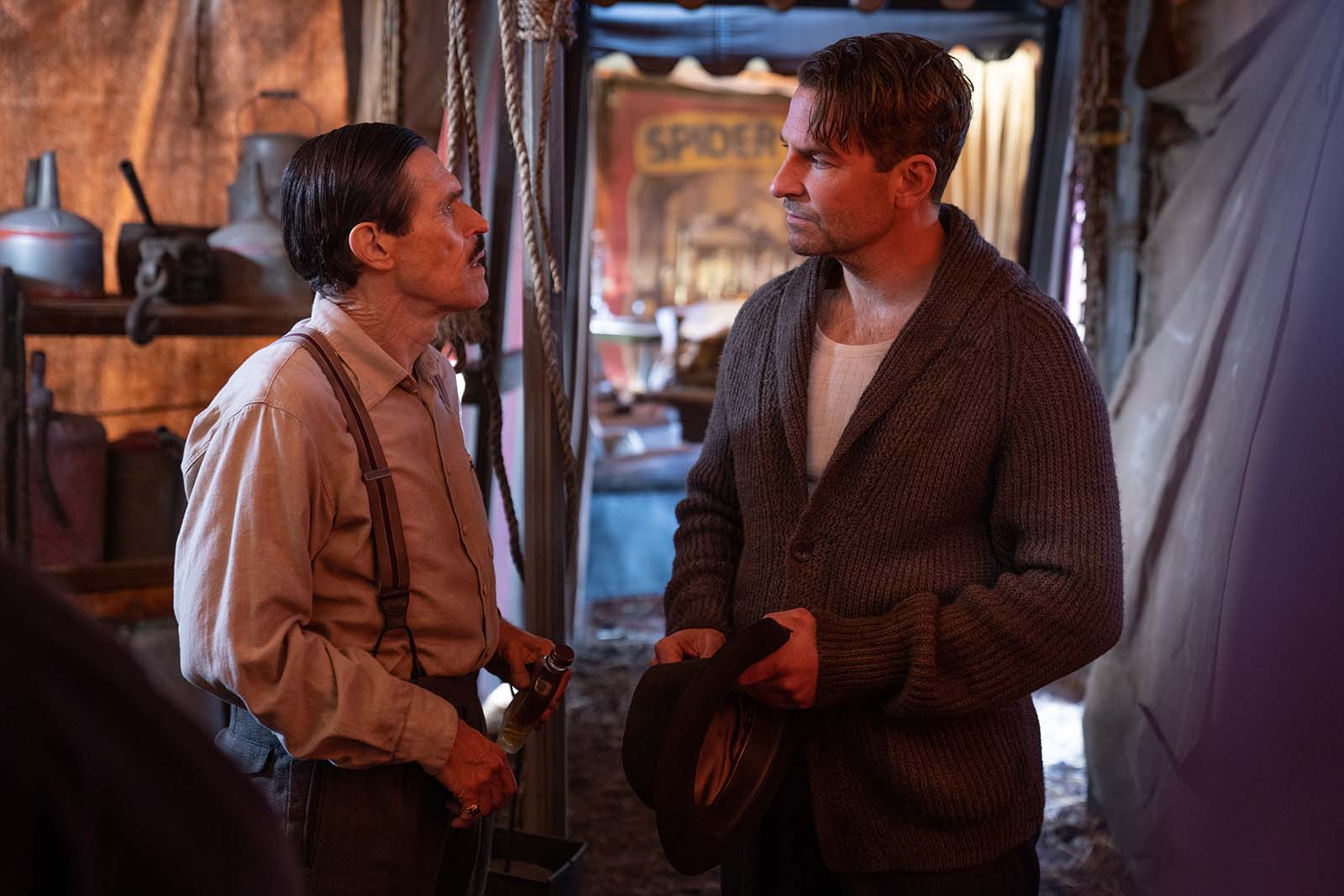
HULLFISH: This film is based on a novel. Did you intentionally read or intentionally AVOID reading that?
McLAUCHLIN: I had seen the original film Nightmare Alley when I was in university, only because it was sort of a cult classic film noir. But beyond that, I didn’t know it came from a book.
Then when I met with Guillermo, he was adamant that we don’t go back to that material. He said, “If you haven’t seen the film, don’t watch it and if you haven’t read the book. Don’t read it.” He didn’t want us to go in there with any sort of preconceptions of what the material was going to be. He co-wrote the script with Kim Morgan. That was the launch pad.
We did have a pre-production meeting where I’d just seen The Lighthouse by Robert Eggers, and it was black and white and pillar boxed. I asked, “Is this something that we’re going for?” – because Dan Lothian was their DP. He said emphatically that he did not want to make “an artifact.” He didn’t want to go back in time and recreate the nostalgia for the era. Clearly it takes place in a period of time, but he didn’t want to reference the cinematography so much.
He didn’t want to lean into Venetian blinds and shadows. He wanted to make sort of a realist pastiche of the source material which was more like the book, which I guess is much darker.
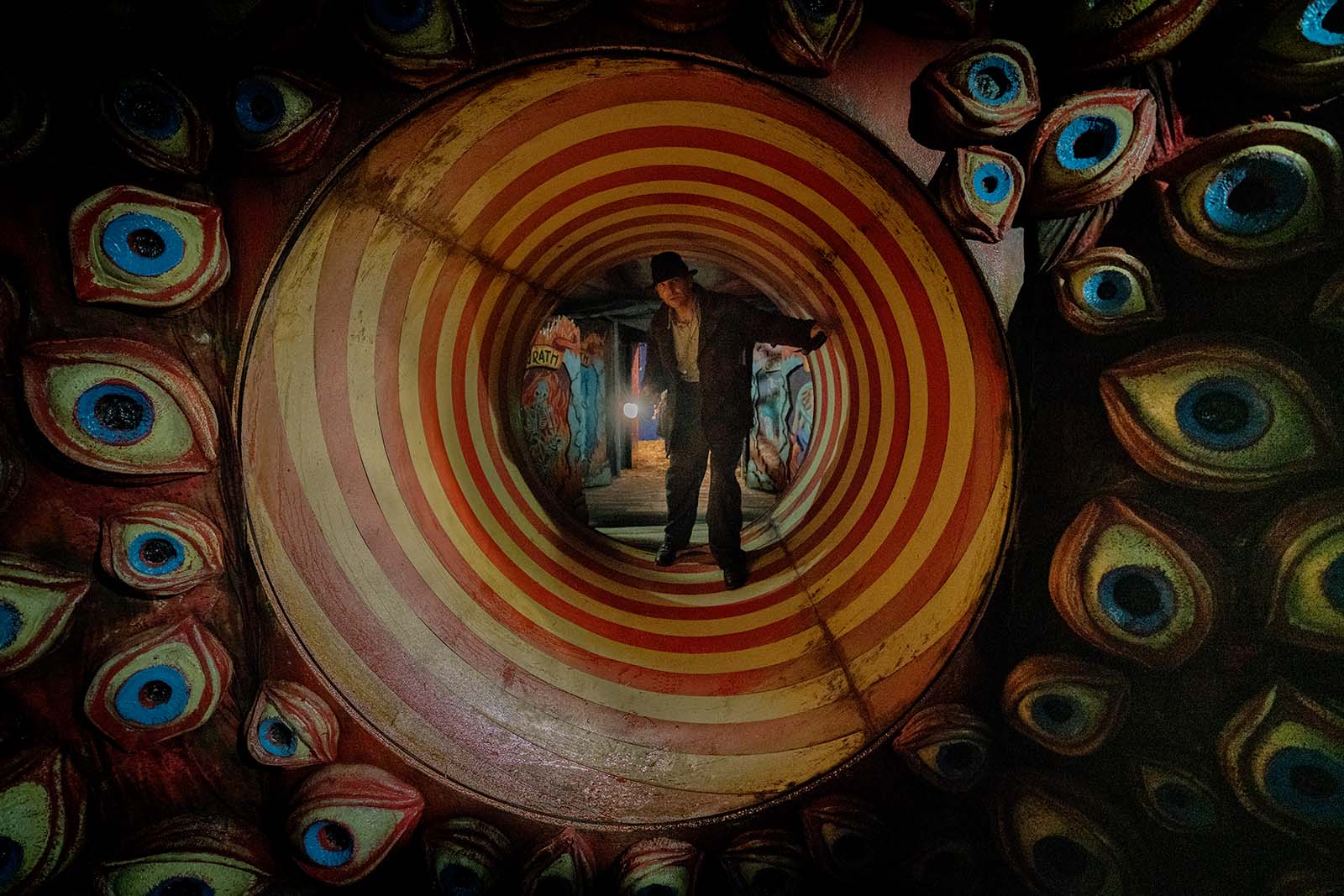
HULLFISH: One of the things about the editing that I noticed that I loved was when he first arrives at the carnival, the sound design just brings it alive. Obviously a sound designer comes in and fleshes all that stuff out eventually, but when you are dealing with it at first how much work are you doing to flesh that out in dailies editing and then refining before sound design starts giving you stems?
McLAUCHLIN: Because I came from an assistant background—I think sound is something, as an assistant editor, you really try to help put a stamp on. To develop and make the world come alive it’s essential to your world-building. Guillermo’s an amazing world-builder and sonically he approaches that the same way he does with picture. So it’s very full. It’s very lush, and the tracks are pretty dense from the get go.
I think sound is something, as an assistant editor, you really try to help put a stamp on. To develop and make the world come alive it’s essential to your world-building.
Sound design-wise and sound effects—not so much music—but as far as creating that landscape. I do the regular “newsworthy” items, but then as the scene starts to take hold and you’re living with something that is working, and as scenes before and after shape and you do sound transitions then we start a dialog with the sound team. They did a fantastic job.
I rely on a library of sounds that I’ve taken from places over the years. And I actually recently just acquired the Mark Mangini sound library. He did Dune.
HULLFISH: The carnival felt like such a rich sonic environment so you were building that out as early as when you’re cutting in during dailies.
McLAUCHLIN: It’s always a process. It’s always gradually going into the direction where we get it shaped and the ideas are all there. They might not be the best quality sounds, but then once we get it to a place, Guillermo and I will call up Nathan Robitaille, our sound designer, and talk about what we like in the scene, sound-wise and reference that we did this here and this here. but make it better. Then we were constantly turning over scenes to Nathan and his team as we were getting through the material and the shoot and then we would start tracking stuff.
We only did one temp mix before the final, so I was taking sounds that Nathan would send—in stems—cut pieces out of it and use it differently than he intended. So when we got to the first mix, it took some time to kind of rearrange all his tracks and conform. It’s a beautiful soundtrack just in terms of the sound. At one point there was a lot of source music in the Carnival, and it was difficult to layer in score because we wanted it to sound like a contemporary piece of cinema.
Any time we put music in, the film was apt to tell us it just didn’t want it. The soundtrack we fell in love with for a while was no soundtrack. It was just the natural, carnival. It’s just such a rich tapestry of the games and the winds and the flapping of the tents. Rhythmically, it weaves into the dialogue and into the camera movement.
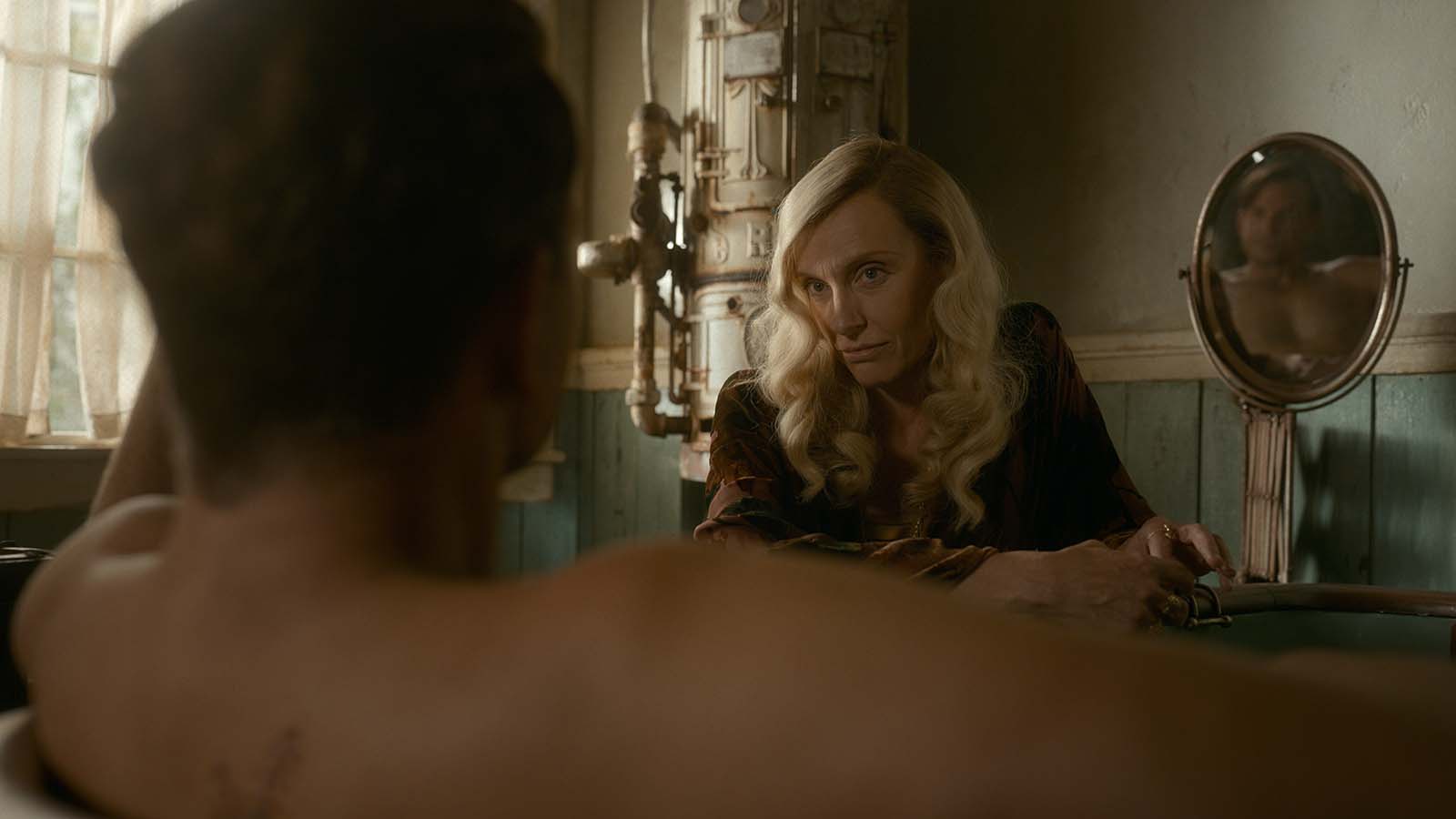
So there is such a dance between all these things. Then once you bring music in, the tango is quite difficult.
HULLFISH: Stuff is competing with each other.
McLAUCHLIN: Exactly. And when you find that in the edit, the film is quick to tell you it doesn’t really need it.
HULLFISH: Quick technical, geeky question. I’m assuming that all of those voices—because a lot of that rich tapestry of sound is people talking—I’m assuming that’s all ADR or crowd looping?
McLAUCHLIN: Yeah. Our dialog editor does a lot of work with a New York group team that does a lot of period. Especially in the Geek Pit. We had requested wild recordings of people shouting out. We started to layer that in and poke it through in moments where we needed to punctuate with those voice-over actors.
And at the Copacabana, the murmuring was all very meticulous. That was a 12-hour session to get 20 actors laying down all this crowd work.
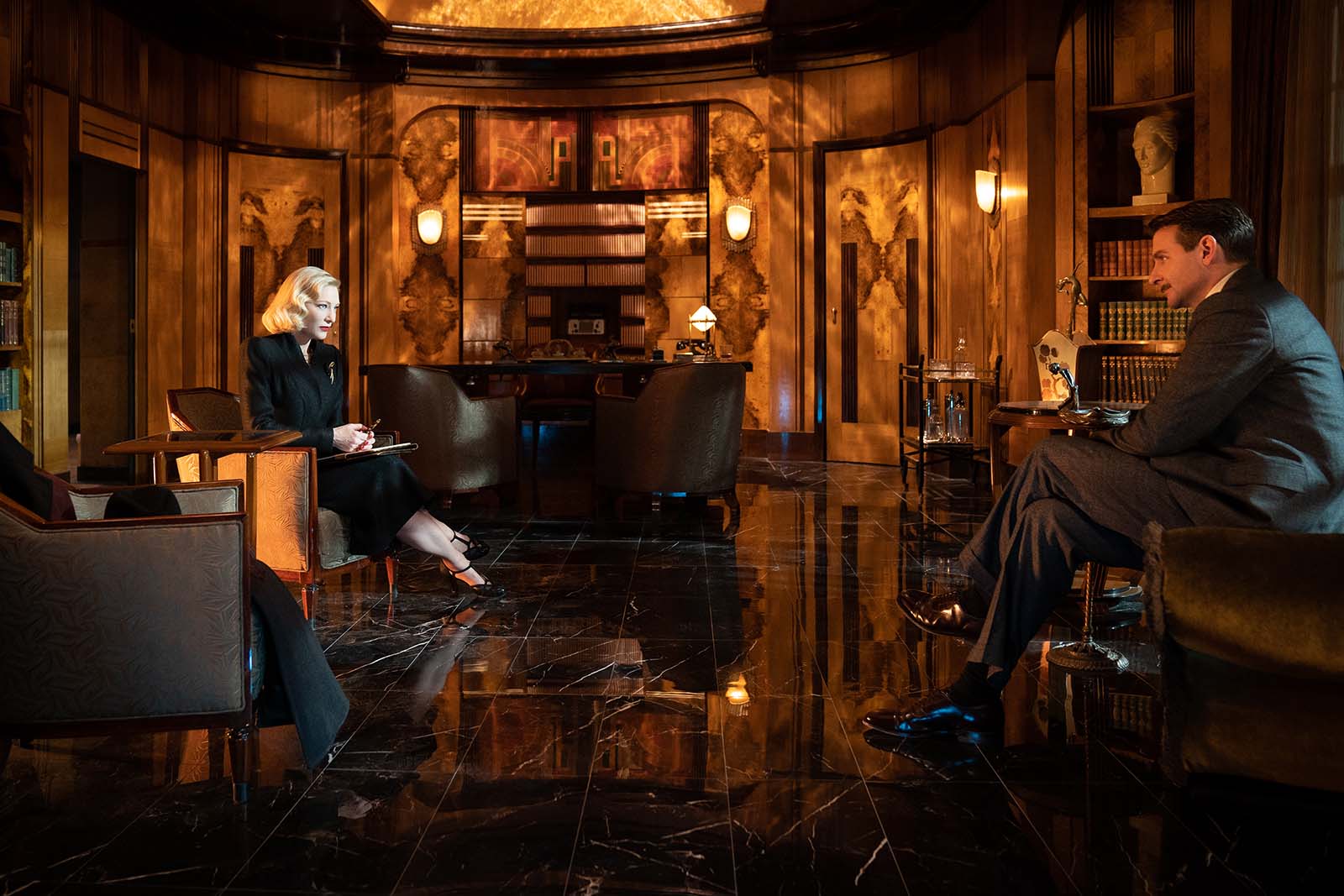
HULLFISH: Talk to me about the flashbacks. I was surprised that there were so few of them. They’re only referenced three times or four times.
McLAUCHLIN: Three times.
HULLFISH: Were they scripted at those moments? Then when you’re editing them, finding that exact right moment in the performance of the “present day” footage to jump to them.
McLAUCHLIN: They seem very straightforward and simple now. They were scripted and they were conceived to be much longer. There was more of a story—a narrative flashback where you really delve into the backstory of Stanton Carlisle through them—especially in the flashback in Buffalo on the couch.
At that point, we learned a lot about his father and his mother and what happened. But it really felt alien to spend time in that story. He has the first flashback when Clem is giving him—potentially—a job and a place to stay. Clem tells him that whatever you did in the past, don’t worry. That motivated that flashback.
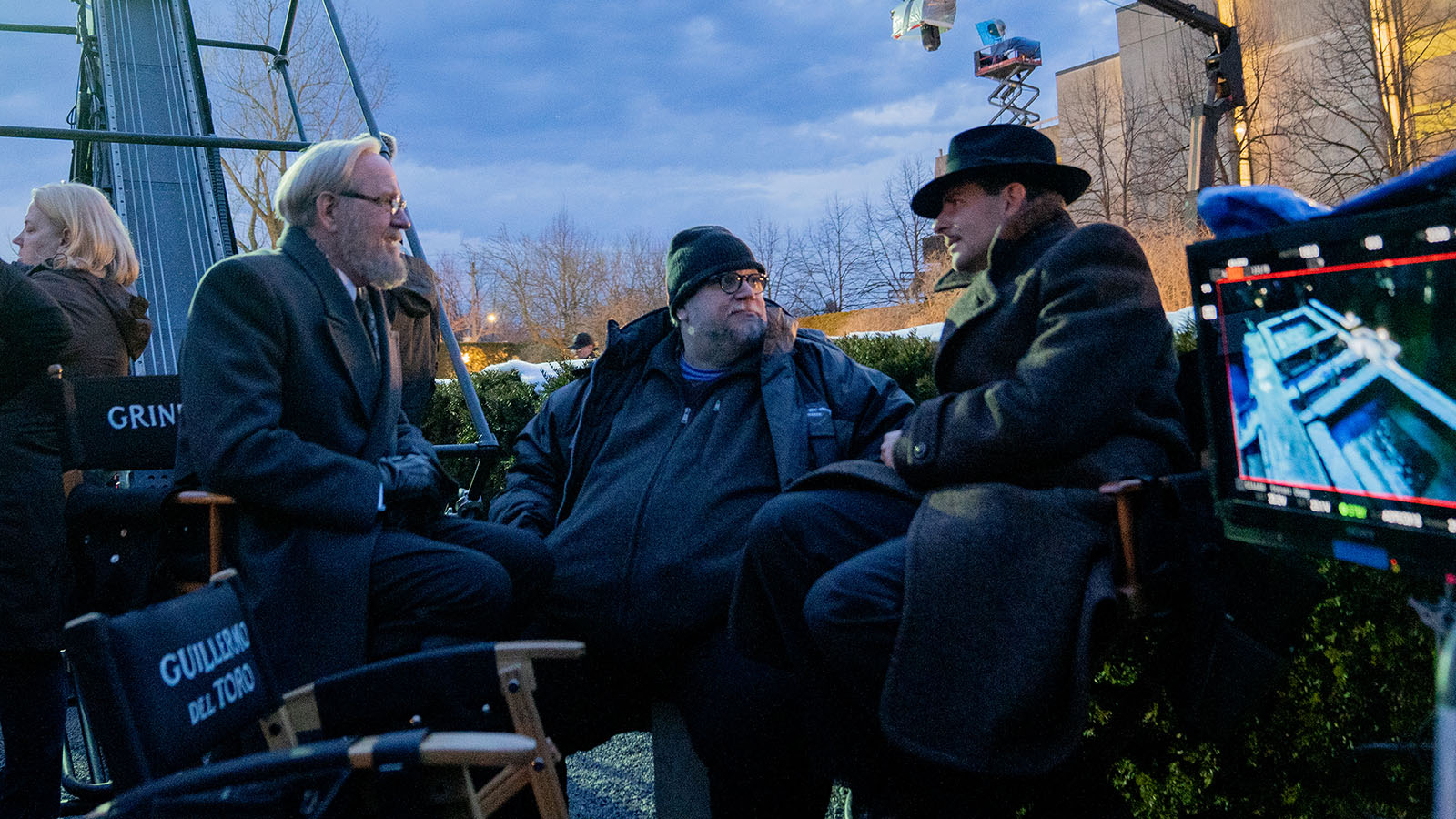
It went from being a whole scene into an impressionistic, more atmospheric piece… Making it more of a feeling than a head-on narrative moment.
HULLFISH: That first flashback is just a couple of shots. It’s two or three shots juxtaposed.
McLAUCHLIN: It’s the window opening. Flames. We do the reverse flame bar into the body. At one point they were very quick, horror-like cuts. Then we started to slow it down. The cutting in the film is very classic. It wasn’t flashy. The flashbacks were sort of meant to be an atmospheric element rather than explaining what happened.
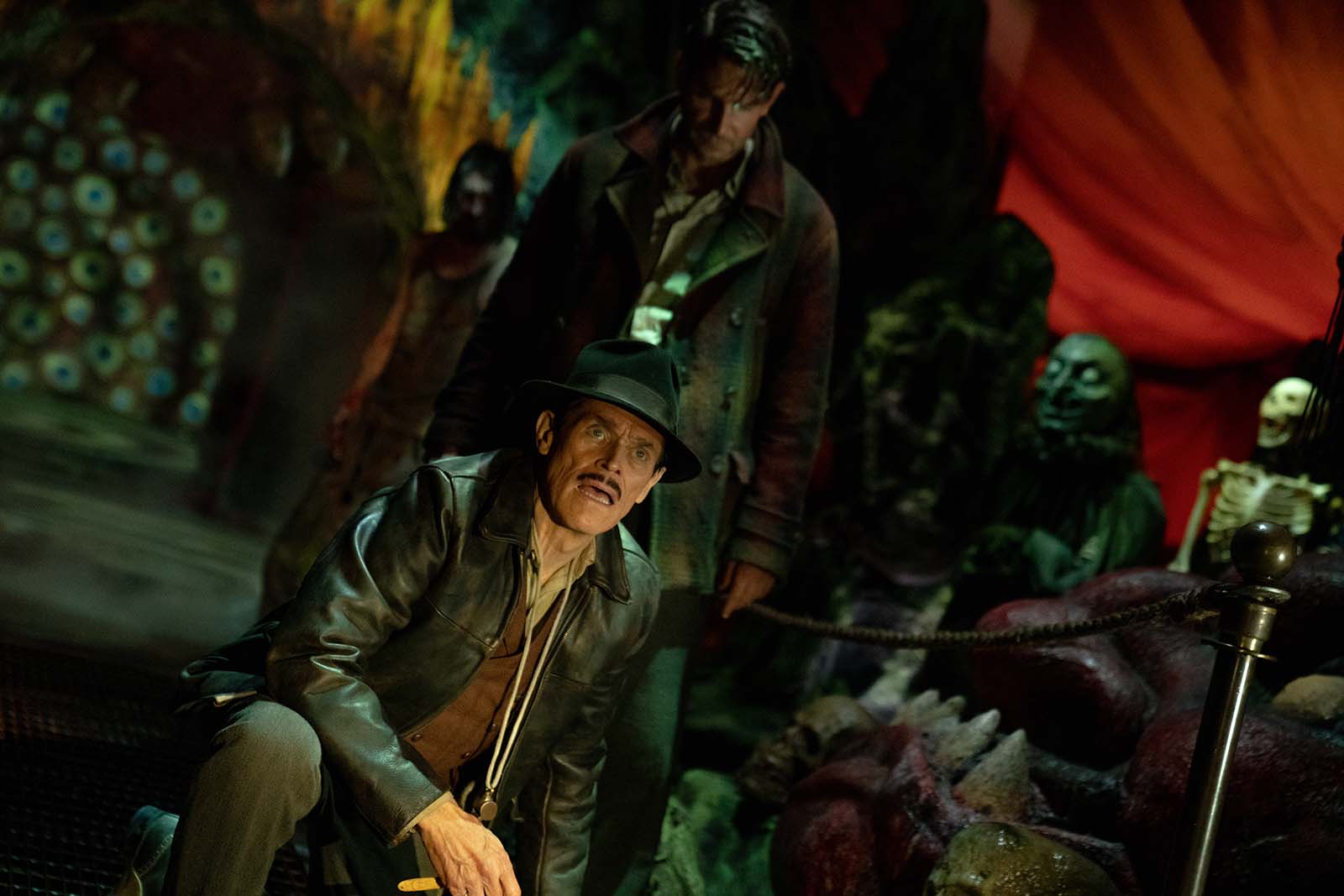
HULLFISH: I loved the cut on the first moment the electrified lady gets zapped. Whatever cut that was was just perfectly timed.
McLAUCHLIN: To make that work we came off the spider lady’s head. There’s pre-lapped dialoge over Stanton’s back, which was interesting. It’s over saying “courting the sins” and pushing in—basically saying, ‘this guy is courting the sins’ and then we go to the spider lady. Then—as we pull back—we really almost muted her dialog. So then we can start to bring in Molly because this is really her moment.
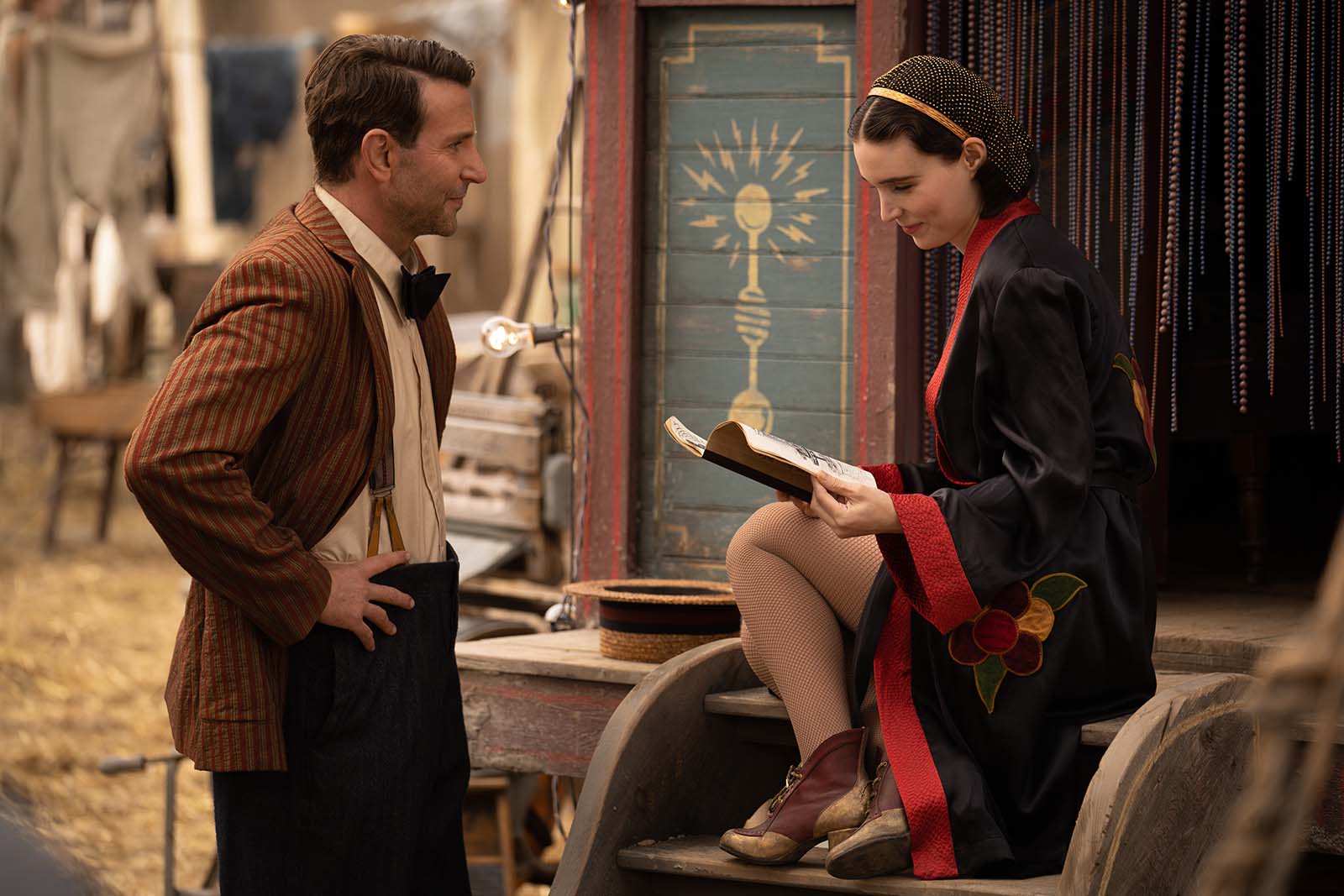
Stan is taking in her act. He’s putting the pieces together. He’s learning from Clem. He’s learning from Pete about the book. He’s this grifting person, although his code is much different than the code of a carny and the family lifestyle that they build together. Whereas he’s just pilfering and taking what he wants.
That moment when he sees Molly—the camera’s coming over on a Technocrane and we used VFX to replace the sky, to give it more mood and enhance the mysticism of the act.
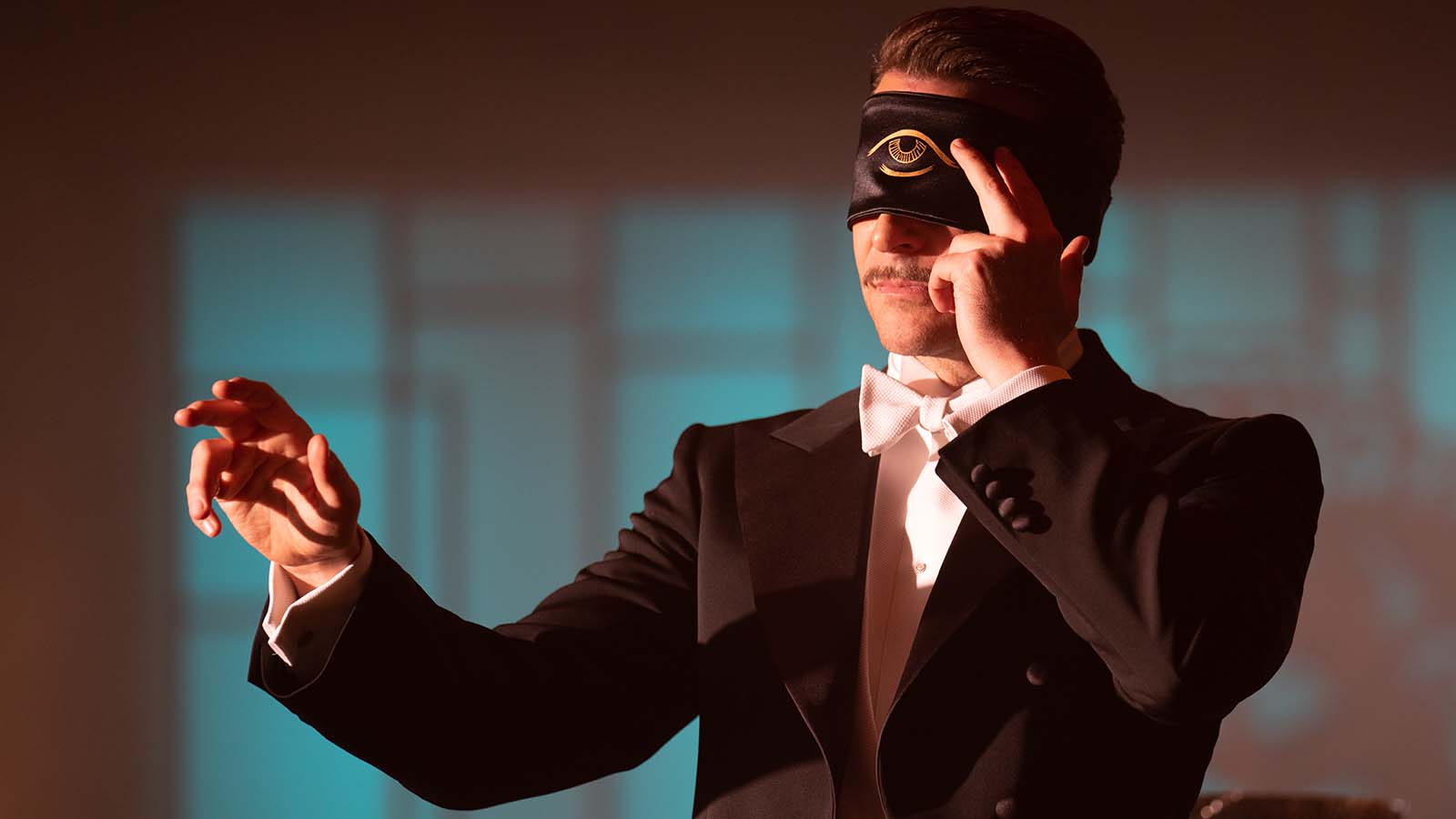
HULLFISH: It’s been a while since you cut this… what was the schedule?
McLAUCHLIN: We started in 2019—January 13th or 10th. We shot up until March 13. That’s when we shut down because of COVID. We actually shot half the lie detector scene. When we picked up in mid-to-late September, I was expecting us to reshoot the scene. But Guillermo felt that he could just jump into it and turn the camera around. You can’t even tell. It’s remarkable.
There’s another scene where Rooney Mara’s running in the bus station after she leaves Stanton and he goes to give chase. When they go into the bathroom, we’re cutting into Toronto on a set that was built—the washroom. From one side of the cut to the other, Rooney Mara gave birth in between!

HULLFISH: That’s crazy. A scene that I loved the editing of was the three-card tarot read in the hotel room. Have you ever heard of Dragnetting? It’s a pejorative word that means that you always cut to whoever is talking. The tarot scene is the opposite of Dragnetting. Talk to me about constructing that scene and knowing how to be on the right person at the right moment.
McLAUCHLIN: For that scene we went back and reshot Stanton’s reaction to watching Molly dance. The first time Guillermo shot it, the reaction was more sad. He was reflective. Stanton’s coming from the therapy session, where she cracked his head open. And from that, he’s coming back to these familiar faces.
Between them is the shot of the rabbit in the hall, kicking off this nightmare. So when we got into the room, the balancing act of it being in his headspace and at the same time being in Molly’s place where her safety net has come back. She’s feeling kind of rejuvenated, re-energized.
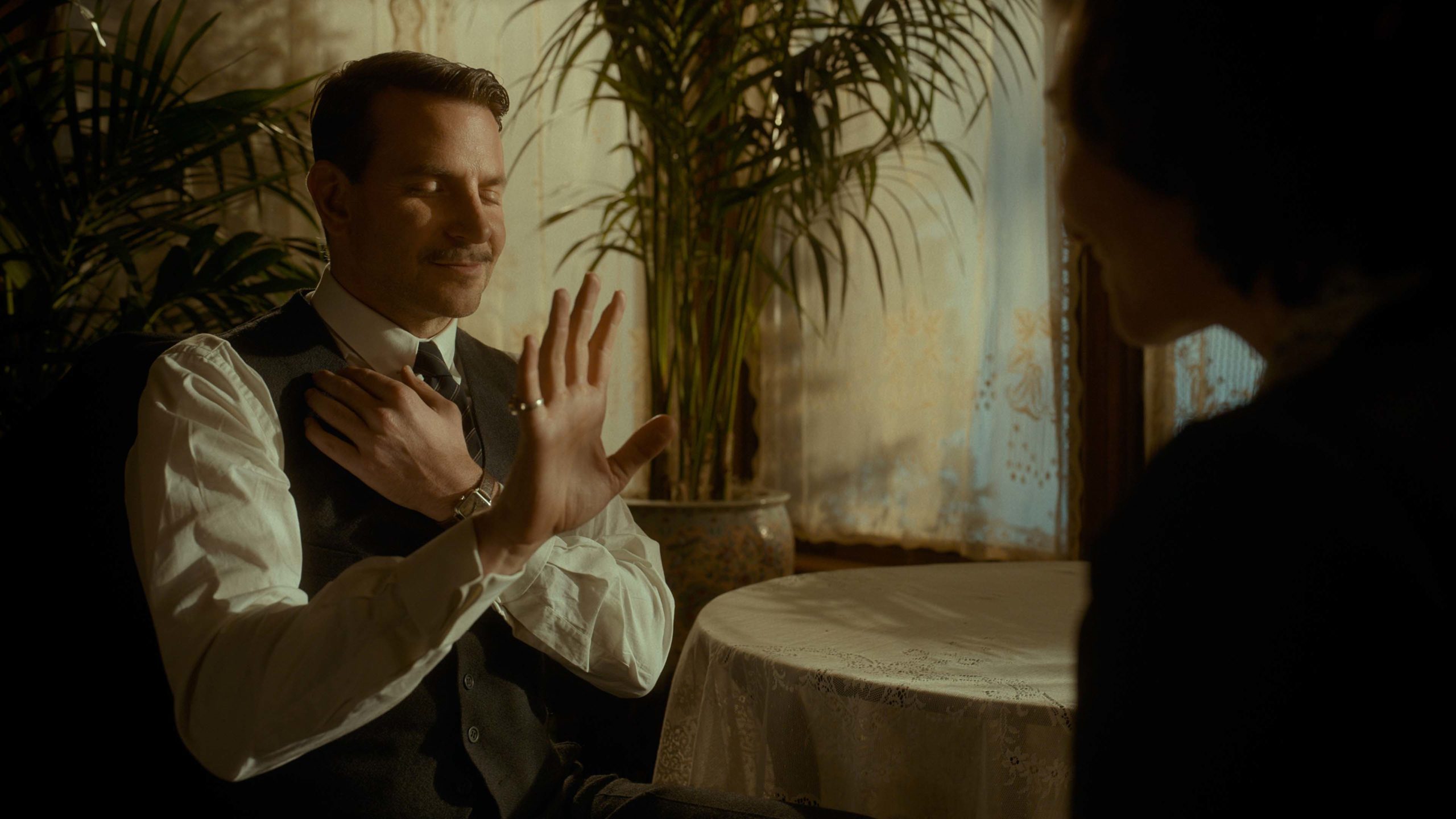
When we get to the tarot card reading, we see that he detests any kind of spiritual force that can exert any sort of will on him and that he can control it all. So the moments where we decide to stick on him or leave him and cut to Molly’s reaction on the couch, it took a while actually to really perfect that, for sure. There was a lot more footage in there and dialogue.
By removing dialogue we were able to let the audience fill in the blanks for themselves and really get into these characters’ head spaces because Zeena is basically saying, “You’re doomed. The cards have spoken.” And he’s saying at the end, “I fixed it,” by turning the card around. So that’s clearly his pathology and his attitude towards fate.
By removing dialogue we were able to let the audience fill in the blanks for themselves and really get into these characters’ head spaces.
The audience is also starting to empathize with Molly, because she’s really this angel-like figure in the film. Unassumingly, she enters this relationship with the person who’s just never going to change and take her down deeper and deeper.
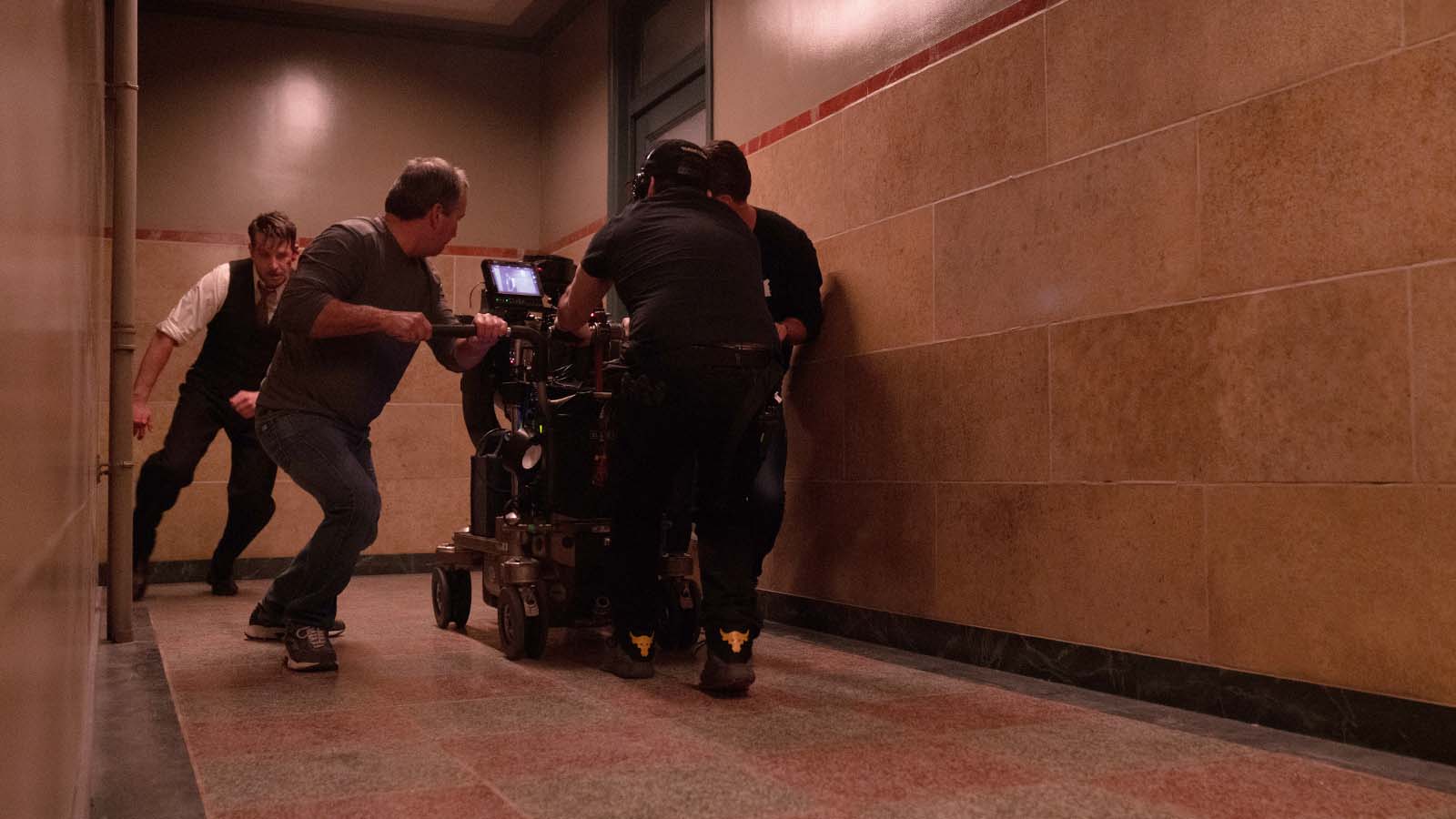
HULLFISH: You were a music editor on Shape of Water. Is that something you feel like is a skill of yours?
McLAUCHLIN: Nathan Johnson, our composer, came in with a month to record a score, did an incredible job. But there’s so much source. So I was placing the source score in moments where music really operates best. It’s taking you down another level of subtext and commenting on things.
So when I try music on anything, I’m really trying to tap into how it can present ideas and questions in the audience musically without hitting people in the head. In a movie like this, you really need to be very careful, which is why it was really tricky to temp.
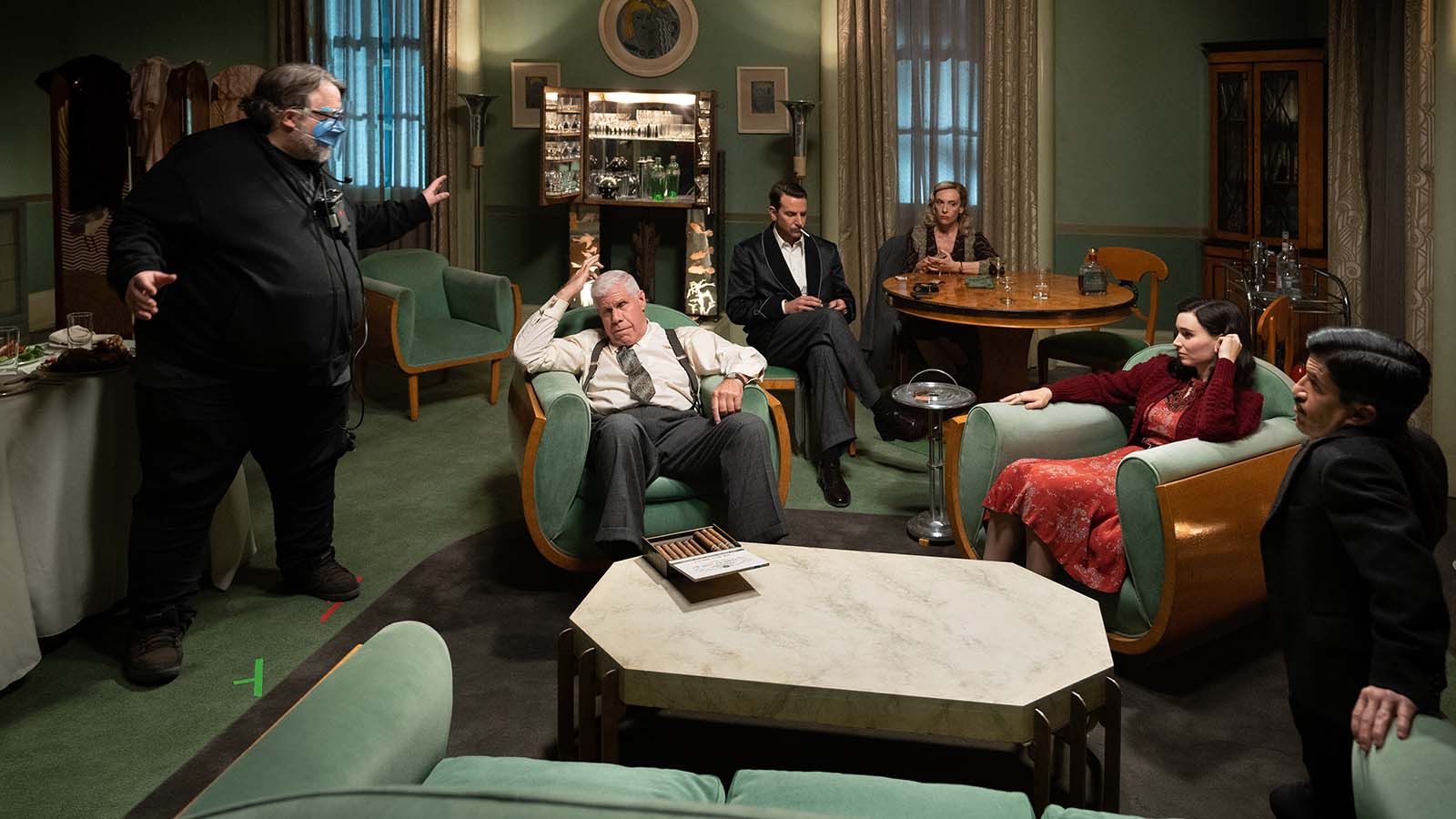
Editing is such a musical thing. You’re playing with all these different notes and instruments—down to a split-screen or a FluidMorph so that you can land on a line or this look at the correct moment. It’s very musical in a nontraditional way.
HULLFISH: So the split screens that you’re talking about are obviously not ones that people see on the screen, right? You’re talking about hidden split screens to alter the timing or performances on either side of the screen.
Editing is such a musical thing. You’re playing with all these different notes and instruments.
McLAUCHLIN: Yeah. It’s hard with Guillermo’s coverage because he always has a moving camera. So you’re matching between moving planes, so it can be tricky, but we were able to figure it out. It’s more of landing certain moments where you need to go in and do some dissecting and really fine-tune stuff.
Plus, that happens later in the process. I’m not doing split screens in an assembly. But once you get into the nitty-gritty and you really start calibrating performances and everything in rhythm, those are tools that I rely on, for sure.
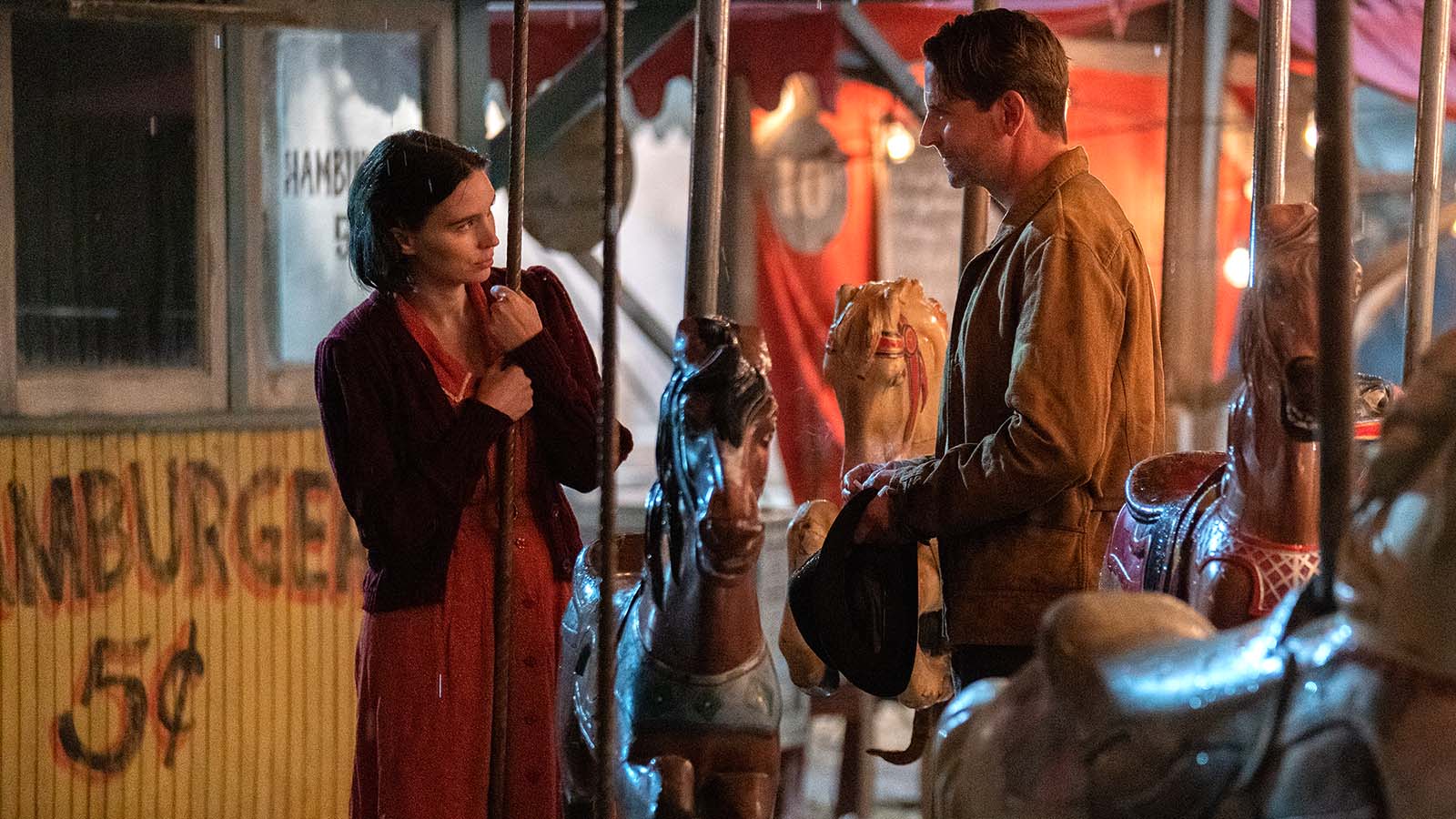
HULLFISH: So the split screens are helping you either pull something up or open something up?
McLAUCHLIN: Exactly.
HULLFISH: Same with the FluidMorphs.
McLAUCHLIN: Exactly. There’s one when Stanton comes to pitch Molly on the electric chair gag. There is a gap because there was some improvization. I just wanted to hear the line come NOW, but it just comes a bit later. So I added a FluidMorph to hide the cut to pull it up. I played it for Guillermo and he said, “I didn’t notice a thing.”
HULLFISH: You mentioned Guillermo’s coverage. Every shot is so beautifully composed and so specific it feels like there would be less coverage on a Guillermo movie than other movies. Is that true?
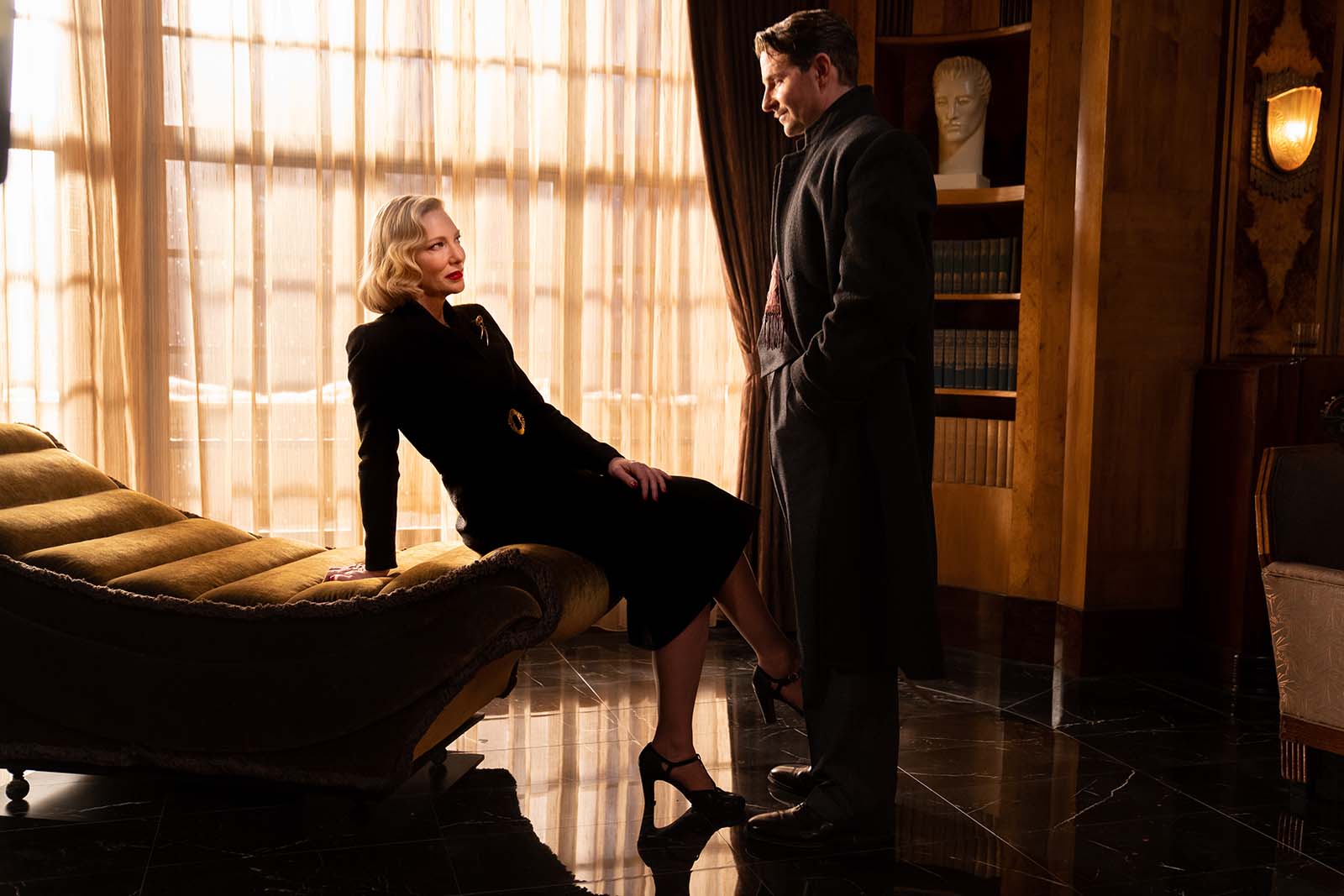
McLAUCHLIN: Very true. He knows what he wants. It’s sort of the beauty of him. He knows we can solve things in post with surgery and being crafty, so he’s never that concerned. To him, the dialogue between the actors and the camera is paramount to the storytelling. So it’s really that dance that he lives with and we make it work. There’s always a solution. He’s an alchemist, really. You can bend the footage to your will.
HULLFISH: When you’ve got a ton of coverage, then it’s much easier to add a line of ADR on someone’s back or cut out and bridge a section of dialogue.
McLAUCHLIN: Yeah, definitely. So it always presents issues, but the solution is advantageous to the benefit of the movie in the storytelling. Oddly, because he operates at such a really gut level and emotional level that the technical challenges of getting from A to B are really the concern. It’s always the story.
So there are some corners we can paint ourselves into, but the feeling with him and working with him is there’s always a way to get out of it.
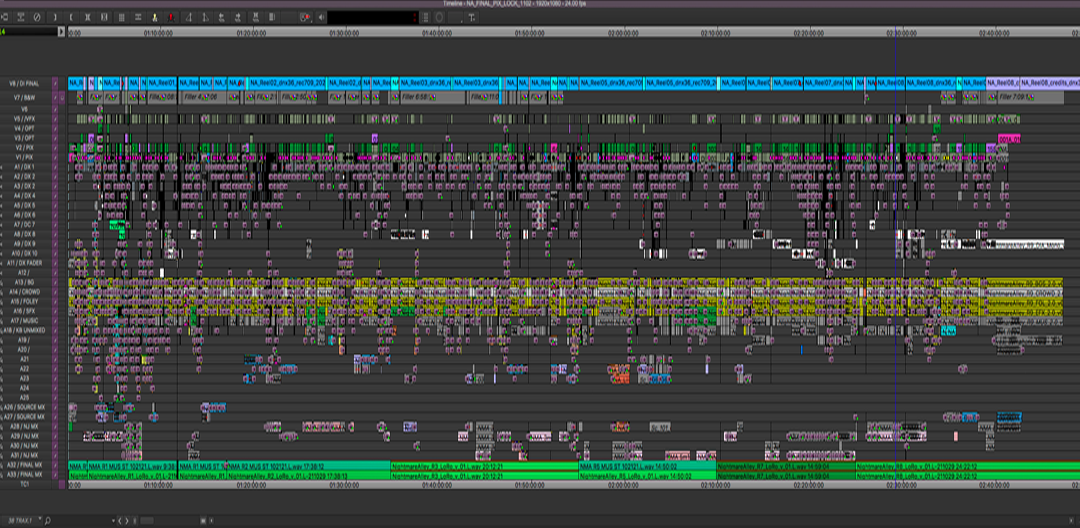
HULLFISH: Where did you find an assistant editor to work with you and how much do you try bringing that person along or preparing them for the edit chair?
McLAUCHLIN: I’ve worked with Mary Juric—our assistant editor on Nightmare Alley—since Crimson Peak. She did Crimson Peak dailies and The Strain and Shape of Water. She’s someone who Guillermo really values and she’s an After Effects wiz. We really rely on her to probe and experiment with the frames and see what we can do.
Some shots are just so deadly, we have to send some of them to VFX, but at least she can create the sense of what we’re after in the moment. For me, having a VFX editor is just such an invaluable tool that I can’t imagine not having someone like her.
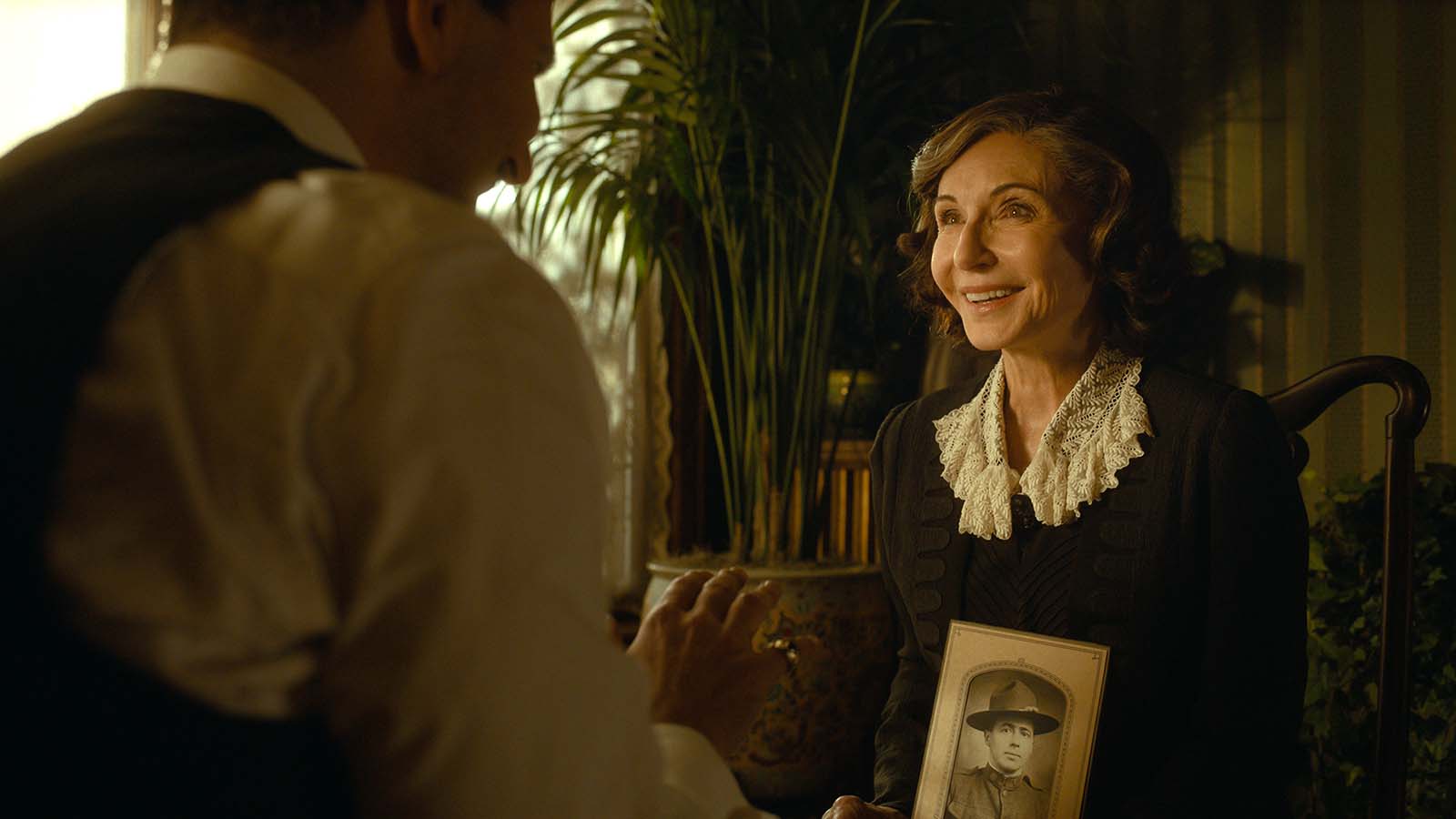
We had another assistant, Harrison Perez. He came in very early and helped me get the dailies all organized because—working with Guillermo—on Monday he’s going to be popping in at 8:00 or 9:00 a.m. and I’m getting the dailies from Friday and I’m blocking the scene out and he walks in and we just start going.
He would come in generally—because it’s a bigger budget film—you get a couple of days to shoot a scene and he would come in and we’d be missing the coverage from the other side of the room and so I’d start slugging in titles saying, POV or Reverse to Stan.” Then he starts drawing storyboards for the day and he’d leave. Then we’d send off a cut with some sound work done and he would have a Quicktime on his laptop, so he can shoot the scene and see how the pieces were coming together.
HULLFISH: So he was actually coming in during dailies into the edit room before he would go shoot?
McLAUCHLIN: Every day for ninety five days.
HULLFISH: Wow, that’s amazing.
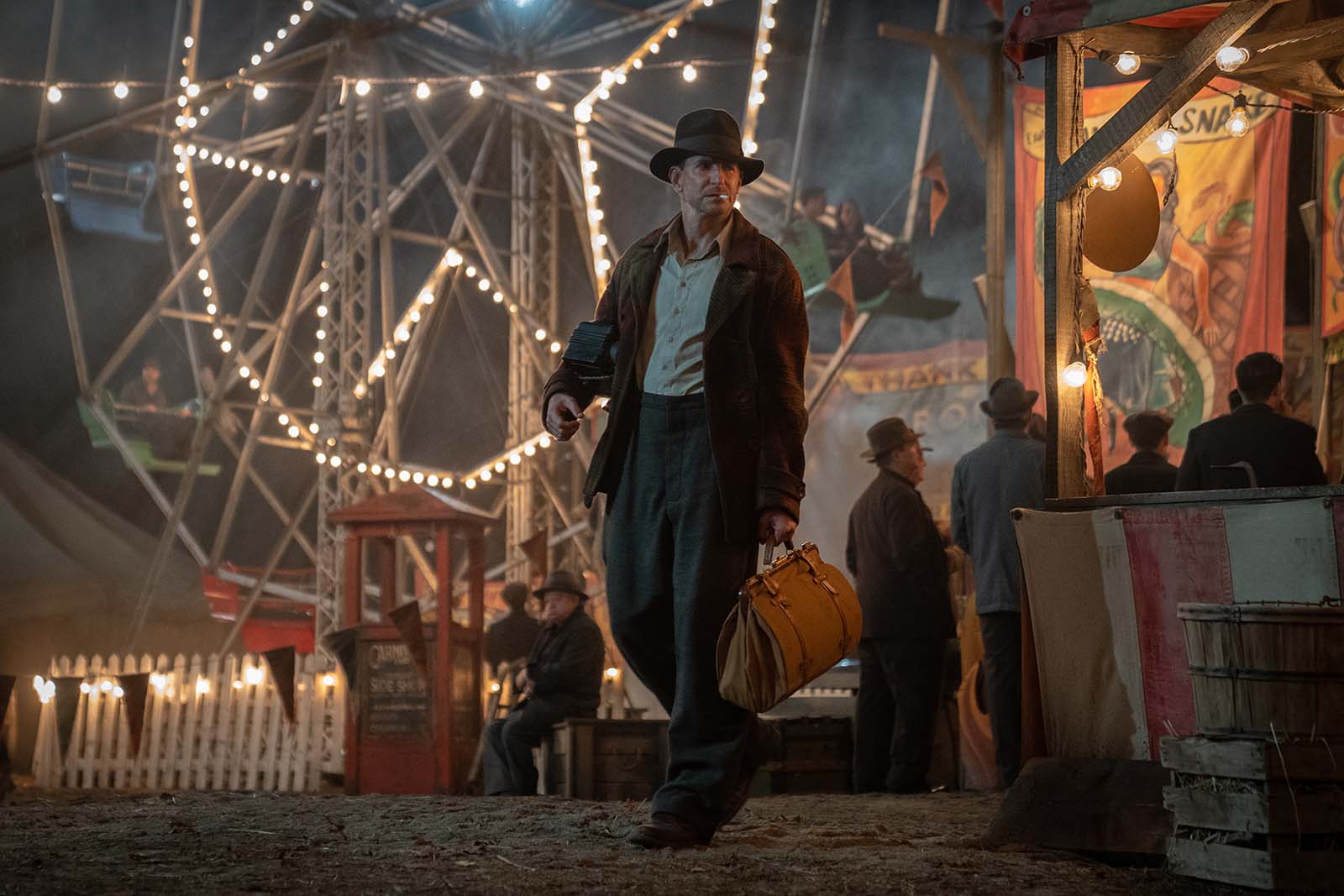
McLAUCHLIN: It was a massive 155-page script. 90 days of shooting. He was tweaking performances on set and we were changing locations of scenes based on the cut or we’d go back and reshoot something.
So to have that feedback loop built into the process of his shooting schedule and him coming in and out of the edit really informed a lot of a lot of choices. Bradley Cooper would come in. Our DP would come in. So to me, that’s invaluable.
HULLFISH: Did your break during COVID help you in any way. Was that some kind of a gift?
McLAUCHLIN: Yeah, for sure. We recalibrated a lot of the material based on what we had because the beginning of the shoot covered the back end of the story, so we knew where we were landing. So it definitely influenced where we needed to come from. So it was very important, actually.
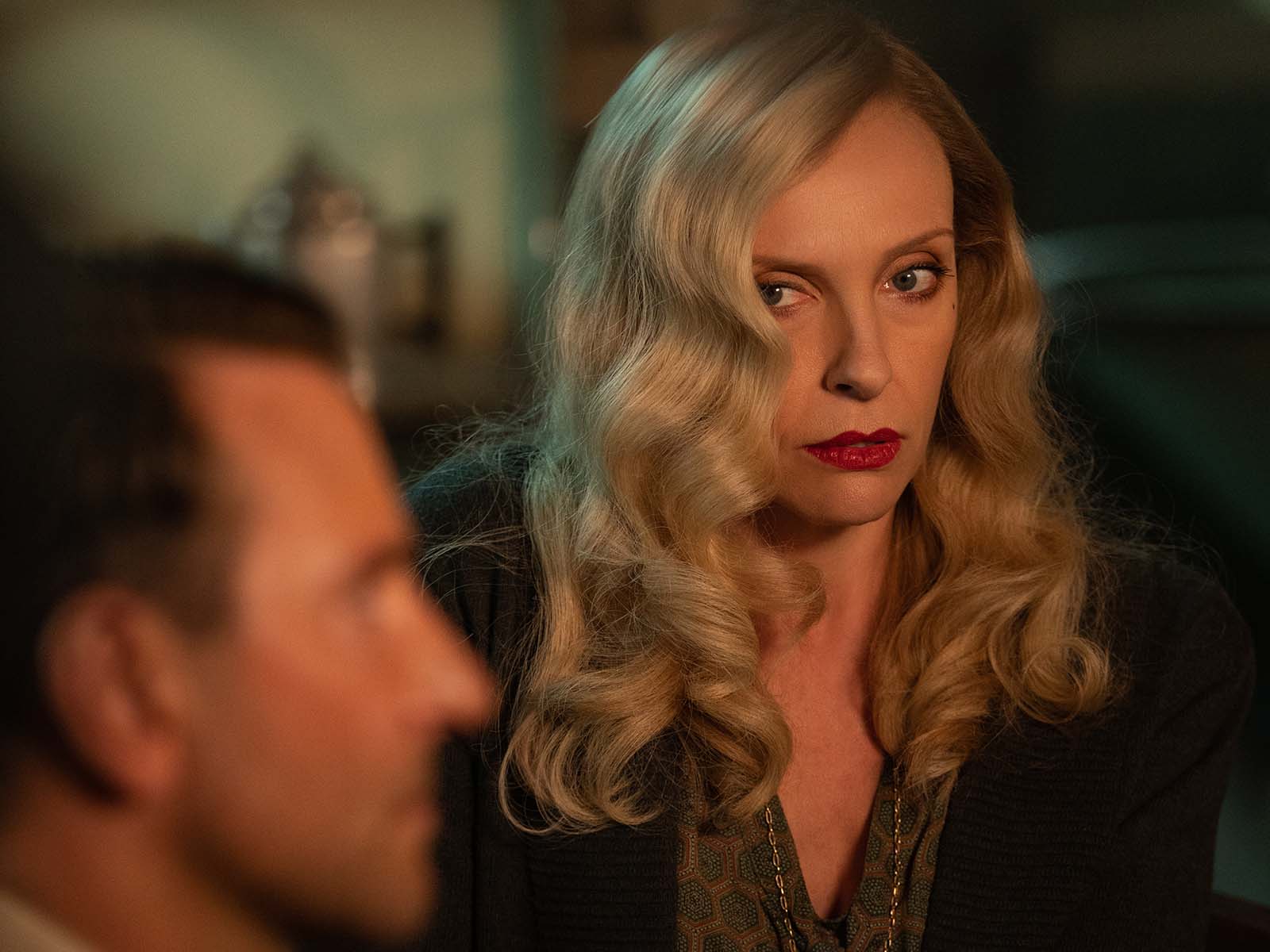
HULLFISH: After production ended and you got into the director’s cut and further cuts, how do you and Guillermo collaborate, both humanly—and then maybe because of the pandemic—technically?
McLAUCHLIN: Technically, we finished shooting at Christmas 2020 and we spent maybe a month and a half remotely. He was in town in Toronto waiting for his vaccine in L.A. Once he got the green light to go back and get it, I came down to L.A. and we worked together in person. My family is in Toronto, so I’d take breaks and come back and do some remote work for a couple of days.
He’s an amazing collaborator. He’s someone who clearly knows the direction of the storytelling he wants, but he’s very open—especially in the edit—because the moment you enter the edit it’s really you and the director and in the film.
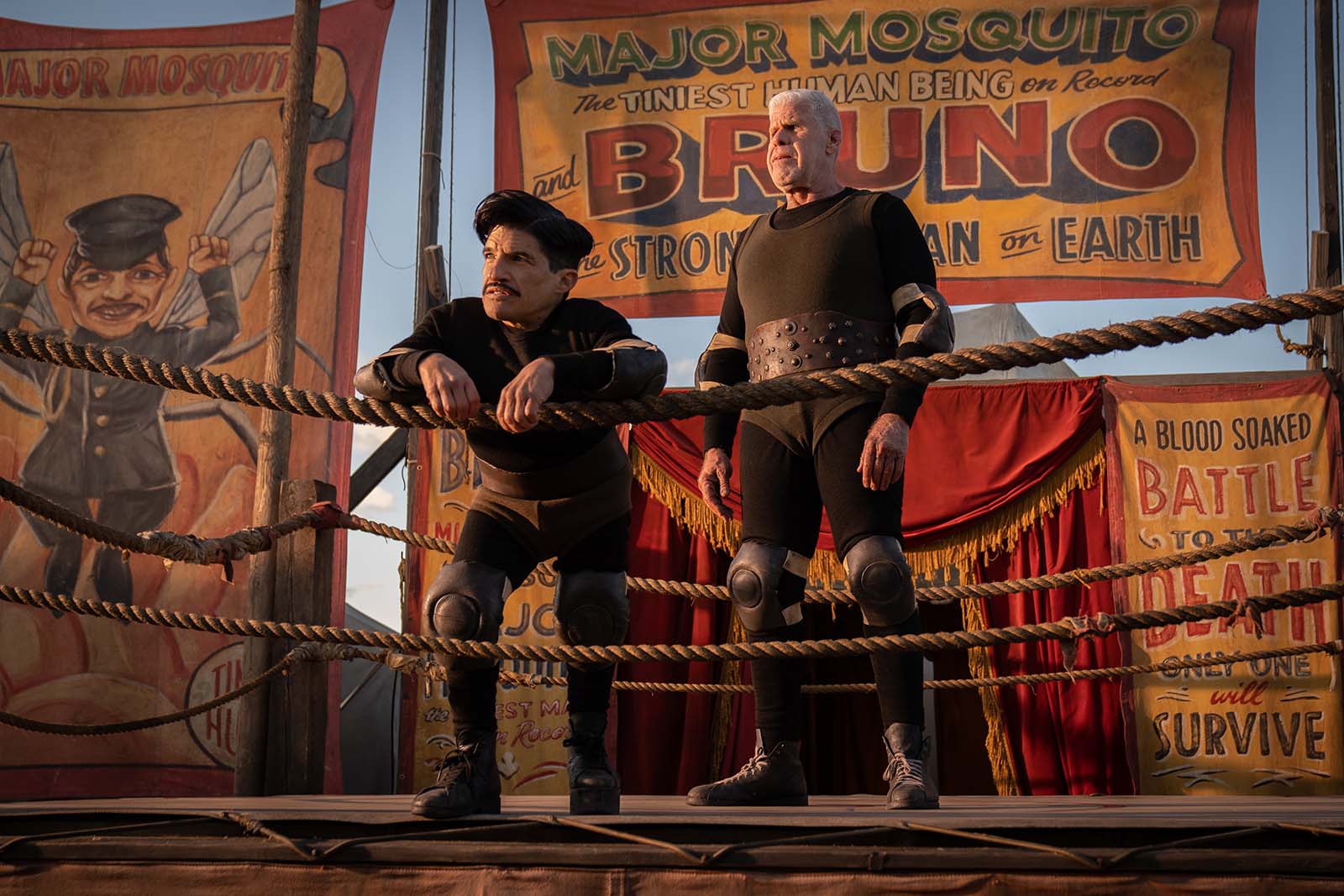
And when the film starts to really take over and tell you what it wants—that’s the only ego in the room. The idea is that there might be a great idea from the go, but certainly experimentation and playing with things and really throwing any sort of preconception away. You can’t have a bad idea. You have to have bad ideas and try things because that lubricates the ability to have good ideas.
HULLFISH: That’s a great way to put it: the ability, the freedom to make bad ideas lubricates the ability to have great ideas.
McLAUCHLIN: So with Guillermo, it’s all playfulness. Anything goes. We can throw that line of dialog from that scene in this scene. It’s really just measuring what the film needs and getting to that point where you’re definitely hearing what the film has to say and allowing those moments of creativity to spark. It might be the wrong idea, but it could be the idea that LEADS to the right idea.
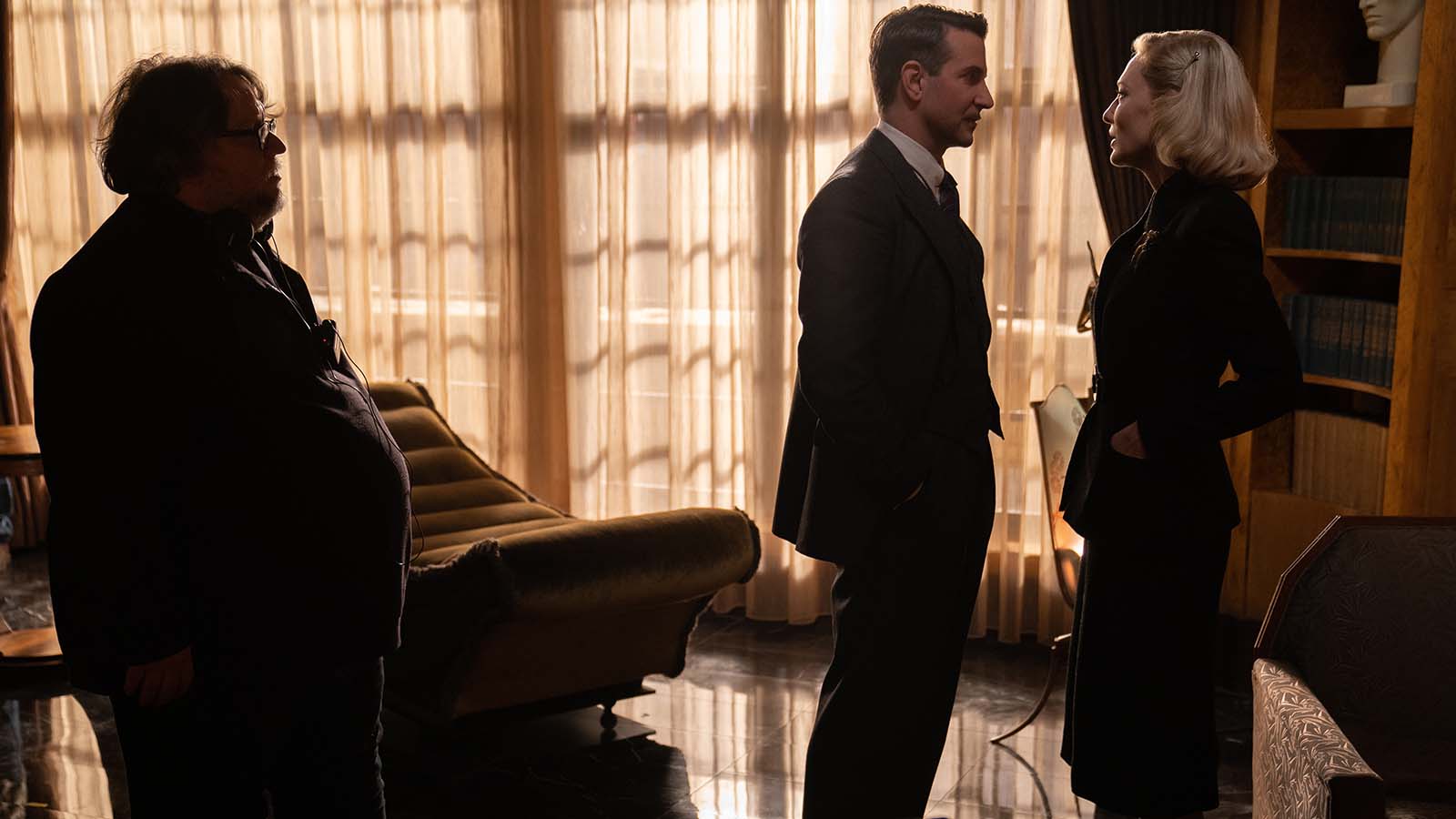
Working in person versus working in Evercast or whatever remote session thing you use… they’re great because it allows you to keep going, but there’s nothing like having lunch or dinner with the director and talking about other things because it all it really just develops a relationship where you get in a rhythm. It has to be kind of light and airy, and you have to feel like you’re in a good, safe place.
HULLFISH: That’s often mentioned by editors: constructing or building a space that the director feels safe.
McLAUCHLIN: Without that, you don’t have the ability to tap into the alchemy of the storytelling. There’s just that magic moment where things start to go beyond what you even thought that scene was about or what that performance is going to do, and you need to be open and feel creatively free because it’s really one of those moments in the process where it’s quiet and there isn’t a lot of noise and it’s just you and the screen.

You know, as an editor, that you have to carry the audience along with you. There’s always a dialogue that I have internally while I’m cutting between myself and the audience.
Then there’s the dialogue I have with the director. At points, you abandon certain perceptions of what the film is and you just sort of experiment. A lot of the times in the Carnival we were playing a lot with the structure because the scenes are sort of modular. We were able to move them around fairly quickly and reshape the path that Stan was taking—learning from his father figures and mentors—the carnies and Zeena and Molly.
But we were able to quickly put together some sort of crazy idea structure there and then watch it and then pick up something that we would learn from that.

So I think stumbling your way through and failing through the edit—especially in a film where you have the time to do that—is invaluable. But, I’m cutting a TV show right now, and you’ve got to make some quick choices.
HULLFISH: I’m cutting a TV show right now, too. It’s definitely a different schedule than cutting a film, that’s for sure.
McLAUCHLIN: Yeah, I like it. I think “OK, we’re just going to live with this.” Versus a film where you cut something and live with it for two weeks and then see how that affects things. Interesting process, right?
HULLFISH: The film process is much different in that you need to have a little bit more patience. You have to think, “This doesn’t work quite the way I want it to right now, but I know in two weeks it’ll be better.”
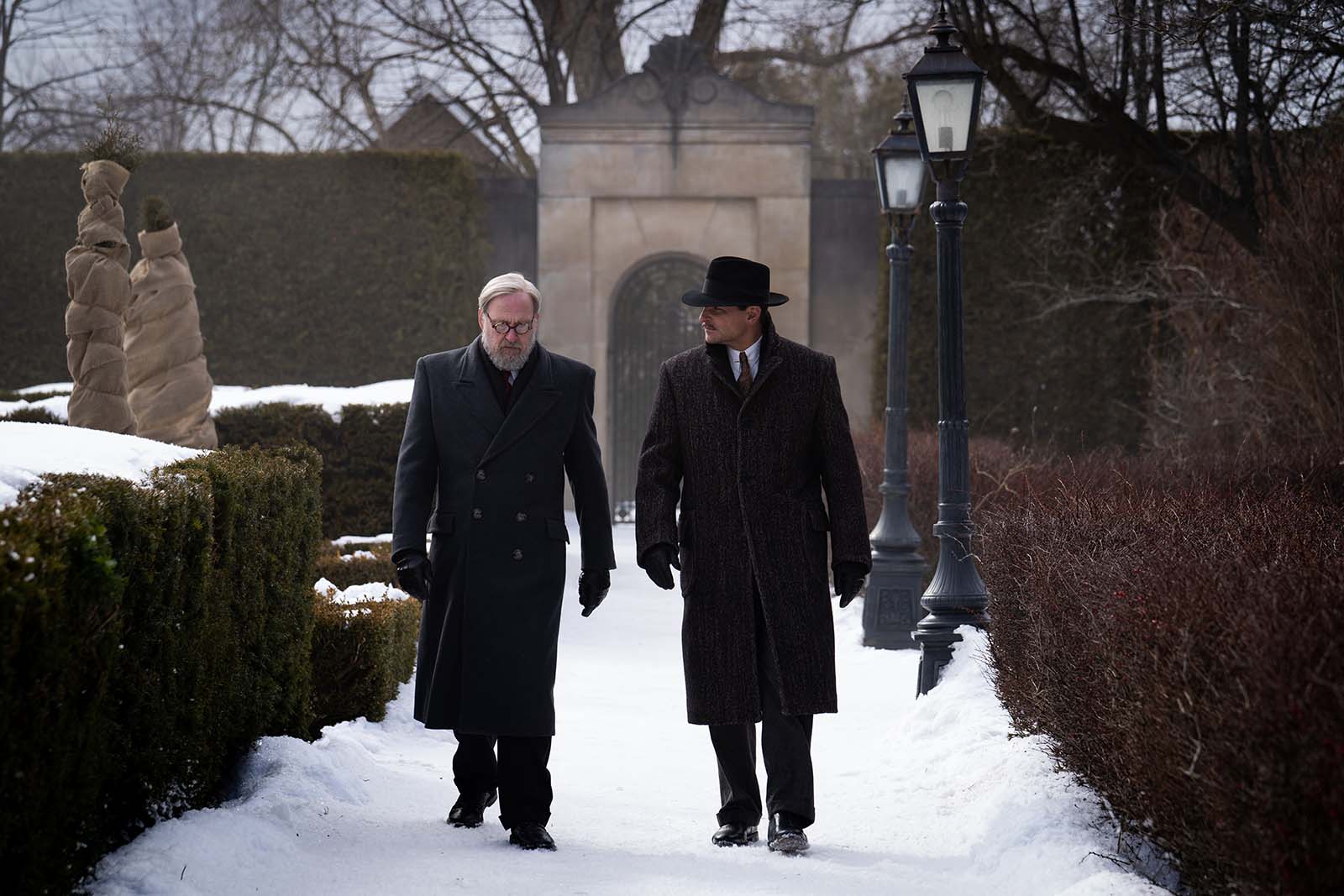
McLAUCHLIN: Exactly. Guillermo likes to sit with things for a while. He definitely lets things simmer because he feels like whatever that fermentation process is—those bubbles might give him something. He’s constantly throwing stuff out of the film that I would maybe take a bit longer to get to, but it’s great because it’s refreshing and he reminds you that nothing’s precious. So being playful with him on a collaborative level is fantastic.
HULLFISH: You mentioned the structure of especially the carnival scenes that were kind of modular and were able to be moved around. Can you describe some scenes that maybe got moved from the script and why that improved the story?
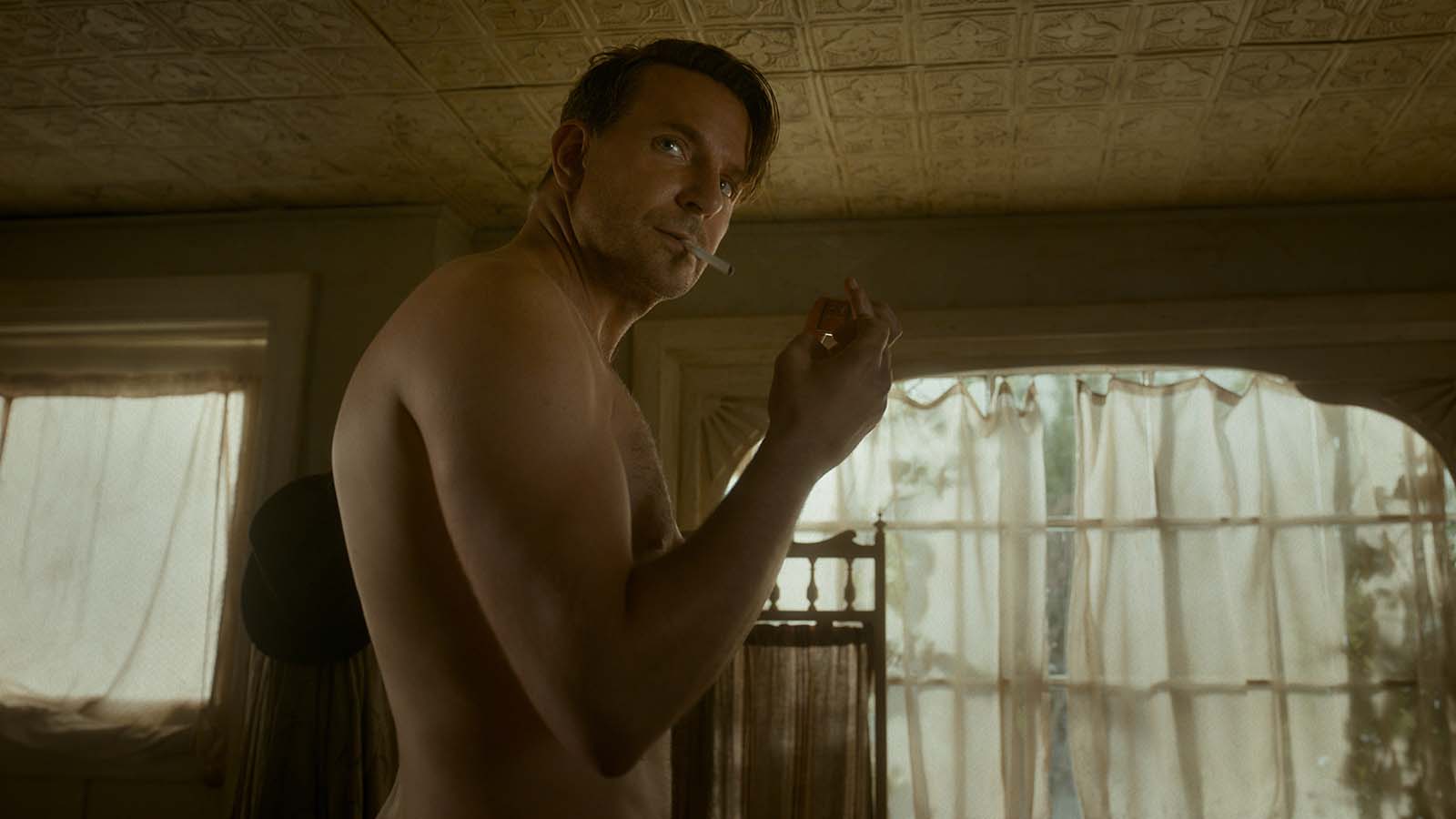
McLAUCHLIN: Sure. The biggest thing in the carnival was the relationship Stanton had developed with Zeena and Pete. Originally he find himself in the Carnival and this nightmare begins—or this dream world begins. We originally had a scene where he meets Clem (Willem Dafoe’s character). Clem gives him money for the radio and says, “20 miles down the road, we’re setting up a new place” and Stanton gets in the car with Zeena.
At that point, they had a whole conversation and Pete’s asleep in the back. He’s drunk with the rabbit. But the scene rhythmically got in the way of us just being with someone who doesn’t say anything. I mean, Stanton literally doesn’t speak until he meets the geek.
As a sidebar, originally, in all the scenes where he meets Ron Perlman in the back alley we did a version where he just doesn’t say anything. And that’s what we have in the film now. And we thought it was really interesting as a character study that the only time he first speaks is to someone who’s sort of this outcast. Going back to the Zeena storyline, there were scenes where they’re becoming more of an item, but that was really affecting the relationship between Molly and Stan.
We needed to leave the carnival with three pieces of information: Stan had to have the book and he had to have the girl, and he had to have the means to get out of there and chase the American dream with those tools. So anything with Zeena, which worked really well and was cinematic—there was a scene in the movie theater where they’re watching an old Don Ameche film where he gets the idea to wear a mustache—there was a lot of chemistry between Stan and Zeena that impacted the Molly relationship. Structurally, there are pieces all over that we had to remove and deal with the ramifications of that. That took a while to figure out.
HULLFISH: The thing I think about with those big removals is: how much of the film do you have to watch to know that it works? Some edits or changes, you just have to go back five seconds and play five seconds past the cut, but with a more story-based edit, you might need to watch the whole film, or at least a reel.

McLAUCHLIN: Clearly, in any sort of editorial choice or decision making process we would go back to perhaps the opening of the film and watch for 40 minutes or we would go back 20 minutes. The idea that you can gloss over a change and watch it five seconds back to me is kind of absurd. And on a longer film the ripple effect is much different. Then you get into the concern of the fatigue of seeing the same stuff over and you sort of don’t want to get too complacent or lose perspective. That’s where always keeping the audience in mind helps.
I don’t have the baggage of writing the script or shooting it or all the behind the scenes issues a producer has or a director has. So for me, I just look at it as the dailies and how I reacted to that—those initial moments, the material—and that’s kind of my life raft. Whenever I do wonder “Is this working? Am I drinking the Kool-Aid?” I always think back to my initial reaction. “I didn’t buy that originally, so why am I buying it now?”
HULLFISH: How do you approach dailies and a blank timeline?
McLAUCHLIN: Yeah. Blank timeline. (laughs) The blank timeline. It’s like a blank page. Some days I can stare at it and then just quickly, go to the internet.
HULLFISH: I had a great conversation with Maryann Brandon and MaryJo Markey, and I asked, “What do you do when you first get in in the morning?” They said, “Well, you get some coffee and you procrastinate.”
McLAUCHLIN: Yeah, it’s true. It’s so true. There’re moments where you can watch the dailies and you completely see the scene in your head. Then there are moments where you get scenes that are very complex, and that’s when you procrastinate and get a coffee and search the internet.
There are moments where you get scenes that are very complex, and that’s when you procrastinate and get a coffee and search the internet.
But generally, the assistants start making a scene bin and while they’re doing that, I’ll just watch a string out of the rushes and have a pencil and paper and just start making notes or just reacting to things. Or I’ll just start tagging markers in the timeline: moments I find are interesting or authentic in terms of performance or in terms of a camera move.
Guillermo’s very specific on set, so the script notes from the supervisor are very helpful. I used to do all these notes and build all these timelines with all the line reads. But now I just quickly go off a reactive cut and build and use circled takes and build and construct and block out something, but then I’ll go back and start to really fine-tune stuff.
The assistants also do ScriptSync. So that’s something I completely rely on, especially with the director, because that’s really diving into the details. But I try to keep it obtuse for a while, and I don’t go to fine-detailed only because there are some accidents that happen when you’re kind of messing around with things. I just study the footage. That’s the most important thing after getting a block assembly done.
But it’s constantly evolving because of the scene before it—that you haven’t got yet—when you get it, you realize, “Oh, all this performance now doesn’t work because of that.” So I try to keep it free-flowing and a bit open for reexamination before you start to really hammer into the details.
HULLFISH: The film is gorgeous and visually sumptuous, but it is emotionally and thematically very dark. What do you do to protect your psyche while you’re working on this type of material for so long?
McLAUCHLIN: Guillermo and I have so much fun together. I have a great team. I didn’t mention post supervisor Doug Wilkinson, who is amazing and keeps us all grounded. We’re constantly working with our VFX supervisor Dennis Berardi and our sound team, Nathan. And the producers and the studio.
The material is the material, but the challenge is sort of the exciting part of it all.
The material is the material, but the challenge is sort of the exciting part of it all. So it was just a massive puzzle and every day was an opportunity to learn something or correct something and get a win.
There are lots of failures, as I said earlier, but those failures are sort of the things that you need to go through in the process to really come up with the strength of the material and the story that needs to come through. The more you sort of struggle on making the movie, the more enjoyable it is—in hindsight at least.
Obviously, these things have an impact on your family and your personal life, but we’re all doing this for a reason, and we’re all telling stories and sharing our experience in this place, so to be able to work with someone like Guillermo, who’s very spiritual in a storytelling sense and to be able to go on that ride is exhilarating.
HULLFISH: Cam, I really loved our discussion today. I can see why Guillermo relies on you and has come to love you and respect you as an editor. Thank you so much for sharing with us today.
McLAUCHLIN: Thank you, man. I can’t even tell you how many times I go to your website, watch your videos and am inspired by your books and the people you interview. Thank you, truly.

